Lake Constance
This past month, I spent a week at various places at Lake Constance, aka The Lake Between Three Countries (Germany, Switzerland and Austria), which despite some bad April weather in between the occasional sunshine is always breathtakingly beautiful to visit. Which means, naturally: a pics pam.
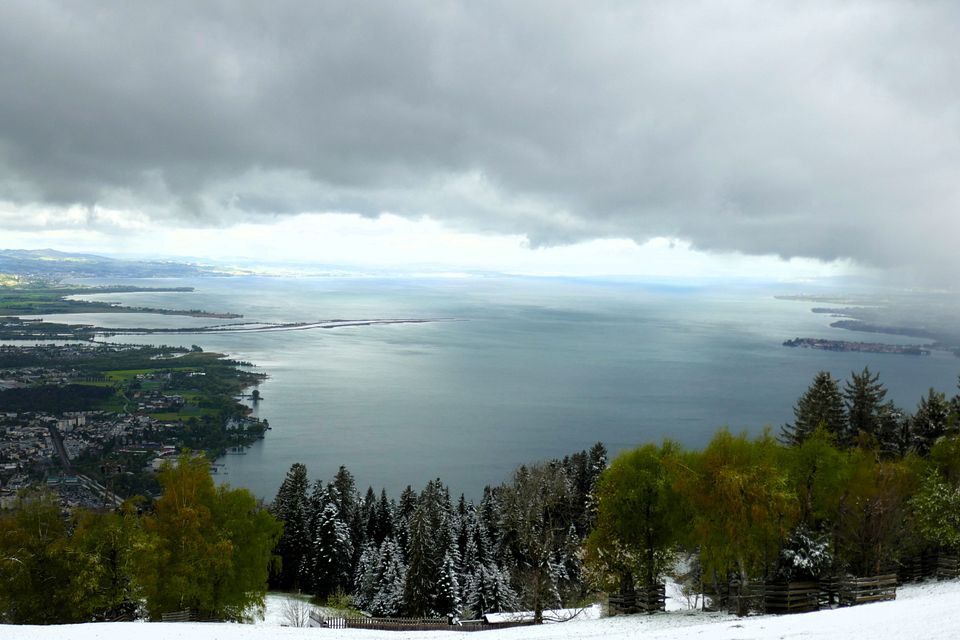
First, I made a brief stop in Bregenz, Austria. Featuring the famous built-into-the-lake opera stage featured in a James Bond movie, so international viewers might dimly recall it.
Bregenz
Unfortunately, Bregenz was where it was coldest. Seriiously, that's where the snow came in. This is the "Oberstadt", the upper city of Bregenz:
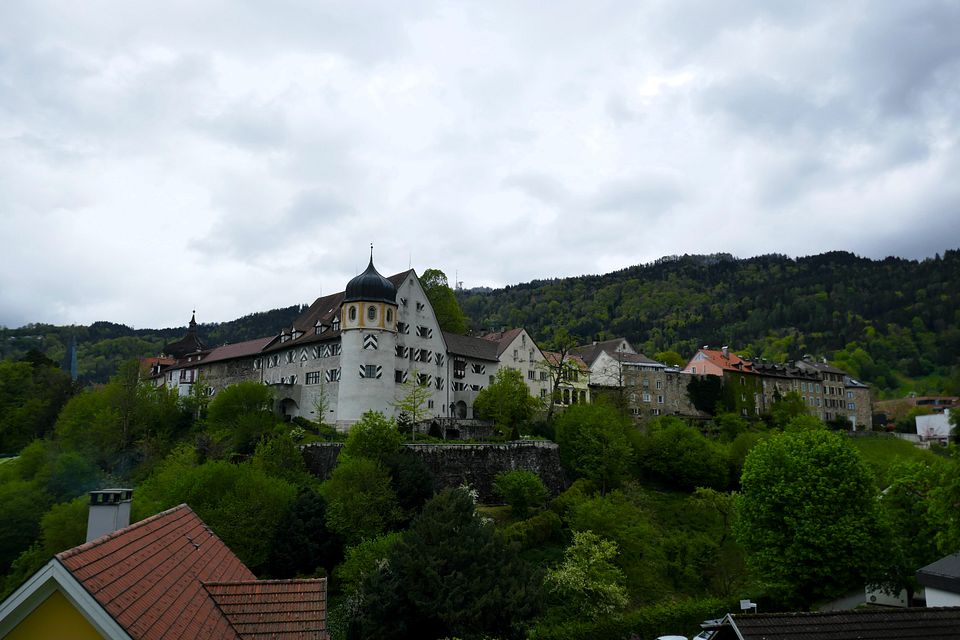

The famous stage, currently in the process of being rebuilt from a production of Weber's Freischütz:
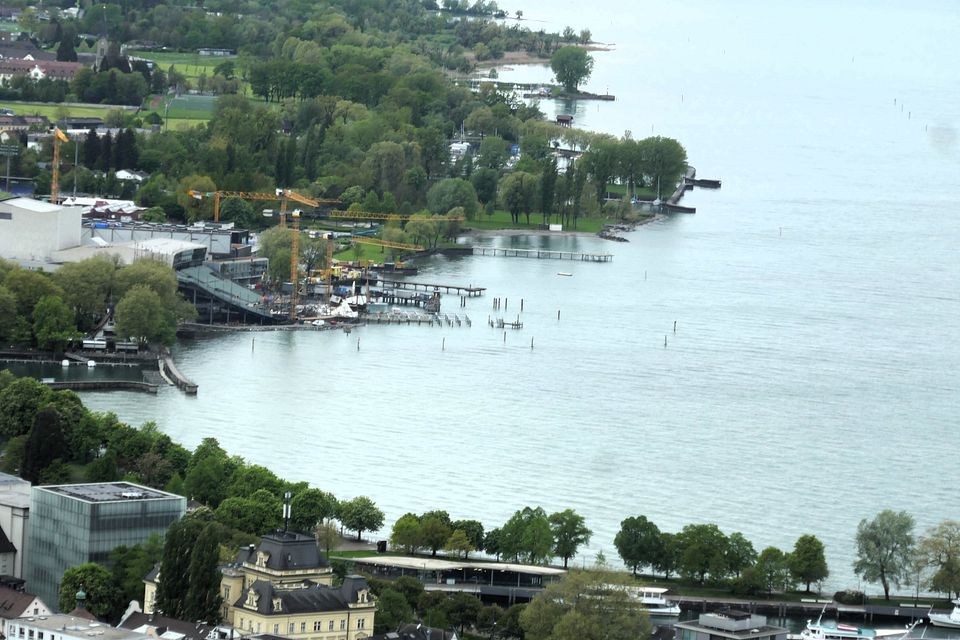

Where the very rich drink champagne in between opera visits:
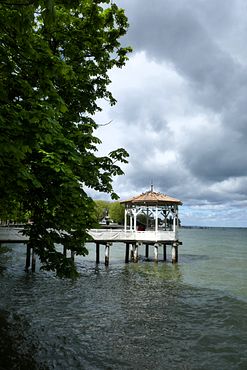
But my main imipression is from when I took the lift to the top of the overviewing mountain, the Pfändler, and was rewarded with this sight:

Next, I crossed the border to Switzerland and visited St. Gallen, home to one of the most beautiful preserved libraries of the world:
St. Gallen
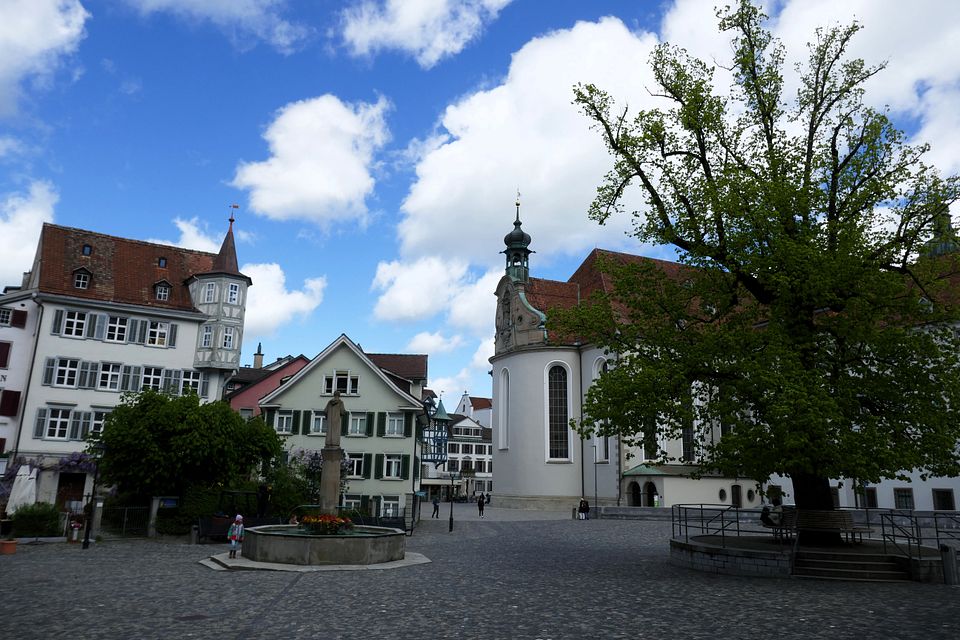
Now, while being an early medieval monastery, St. Gallen went through the more common than not fate of extensive makeovers, partly due to renovations, or burnings, or showing off against the competition. The current aesthetics are therefore not medieval but baroque. And how. This is the inside of the main church.
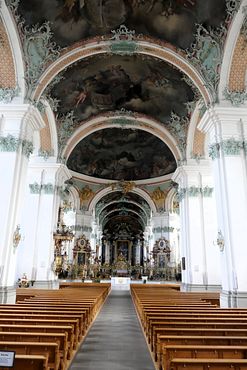

But like I said, the star attraction is the library. The last time I was there, over a decade and more ago, one wasn't allowed to take photos, and my AP took one illegaly. These days, in the age of the cell phone, it's permitted, but only without flashs, and also there are so many people there at any given day you can't get the library on its own. It's still awesome to behold:
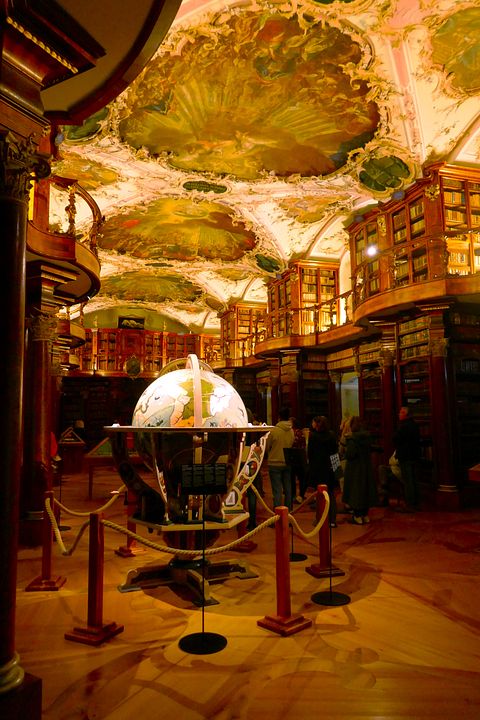

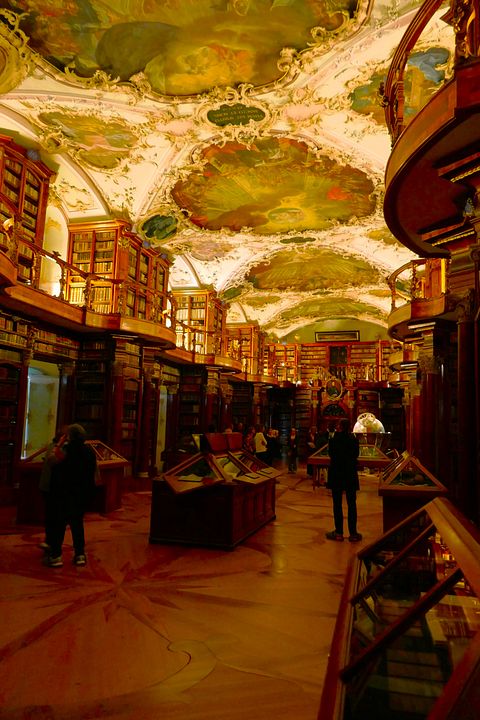


The globes there:
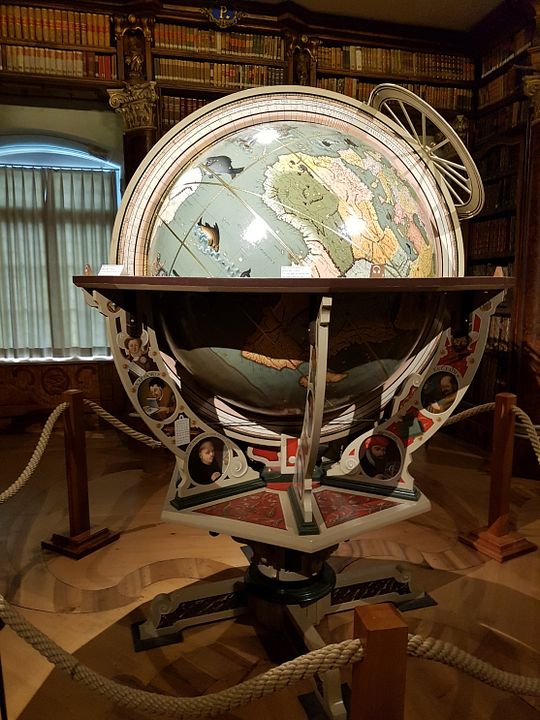
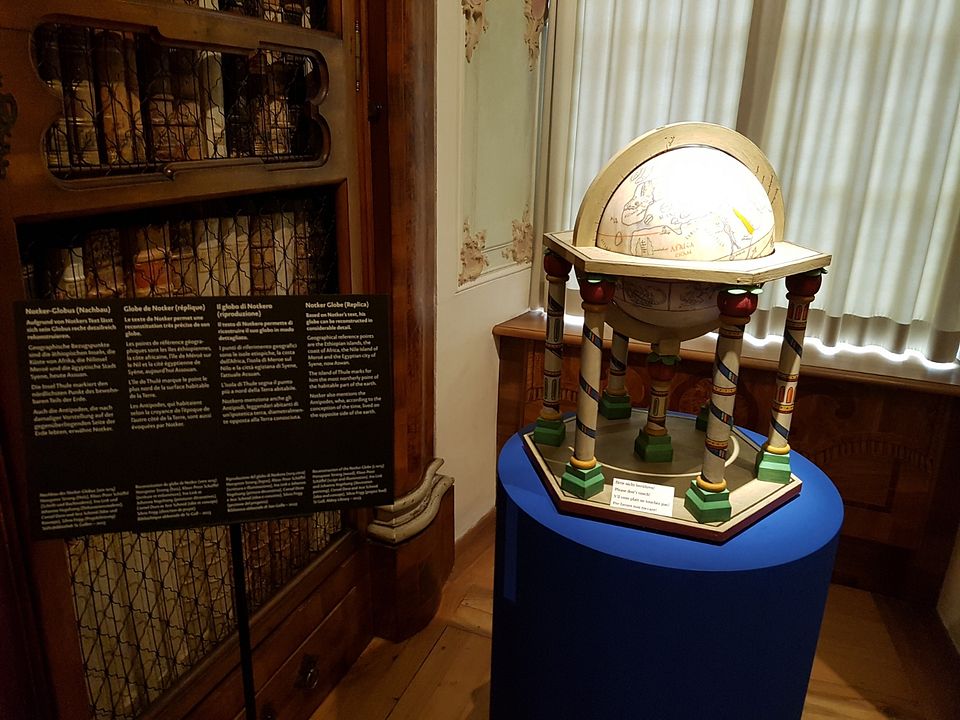
And a mummy! (25th dynasty, so relatively late into Egyptian history, but still incredibly ancient for the monks and us.)
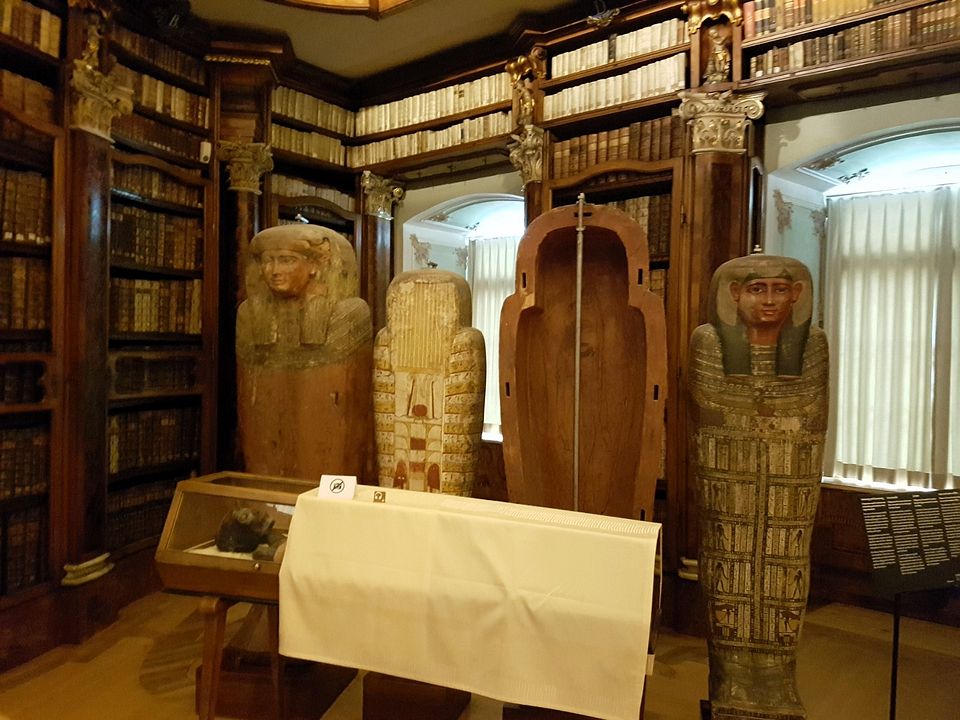
The big monastery rival of St. Gallen in the early middle ages was the monastery on the island Reichenau, which is where I went next. (Crossing borders agian to the German part of the lake.) This island is celebrating its 1300th birthday this year, but it's worth visiting at any time, although, unlike St. Gallen, the Reichenau monastery had bad luck from the late middle ages onwards, and so its library disappeared and now the books reside elsewhere, having returned for the first time in centuries fo rthe big anniversary exhibition.
Reichenau
Reichenau today is often called "the vegetable island" , partly to differentiate it from the "flower island", Mainau, and partly because from time immemorial onwards, it had extremely fertile land that was used for vegetable, fruit and vineyards. Here's a panoramic few from the highest point of the island (not very high, mind you, barely a hill):

This is the side where the river Rhine enters the lake.
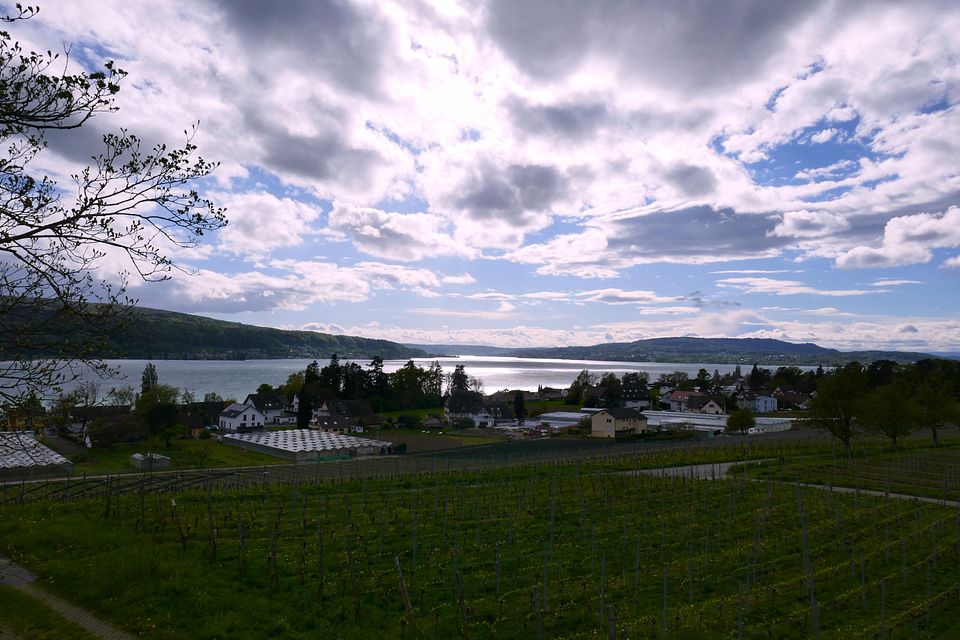
The other side:


There are three small towns/villages on the island, Oberzell, Mittelzell and Niederzell. Of the ca. 20 churches that used to be there, three main ones are preserved in each community. Oberzell has St. George, which was founded in the late ninth, early tenth century by one of the island's most powerful abbots, who rose all the way to the top of the East Francian Empire, becoming the Regent for the last Carolingian ruler, Ludwig the Child. His name is Hatto, and Hatto didn't dedicate this church to St. George by accident; he'd been given the Saint's skull by Pope Formosus. Aside from said relic, St. George's standout attraction are the wonderful Ottonian era frescoes on the walls. Check out the church:
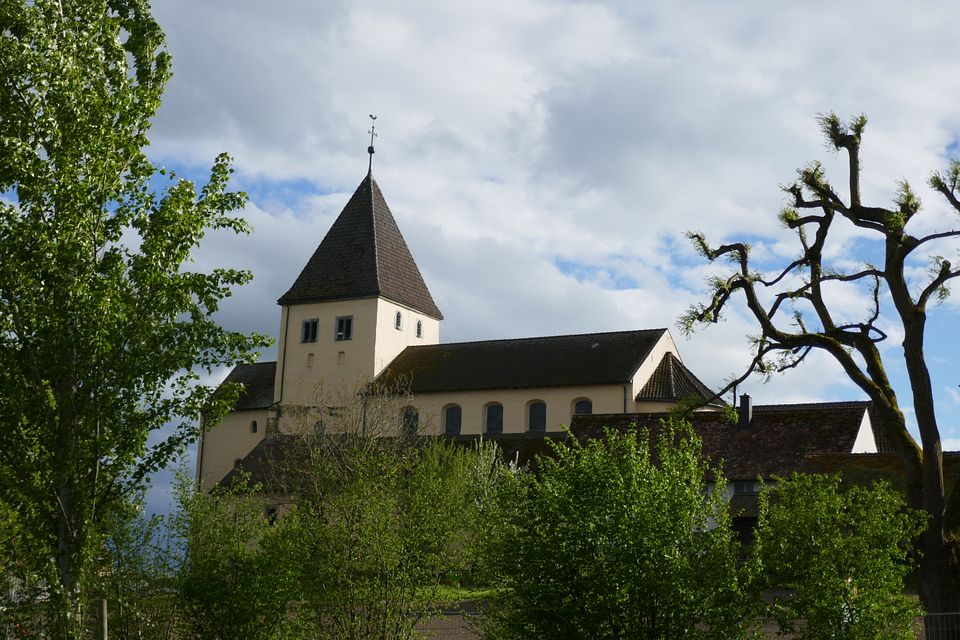
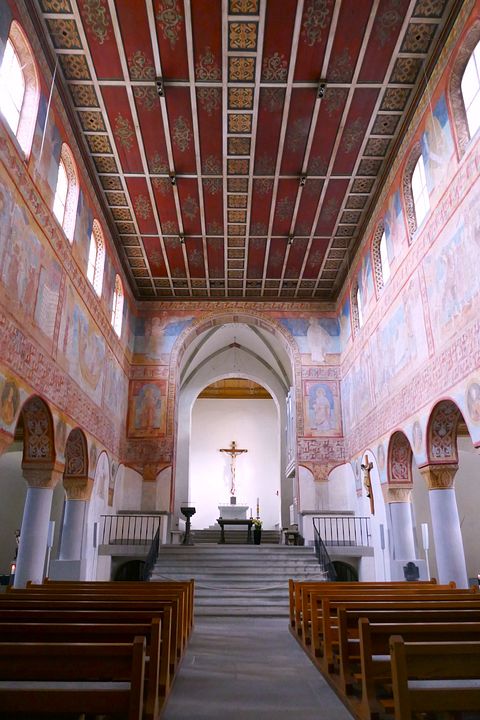

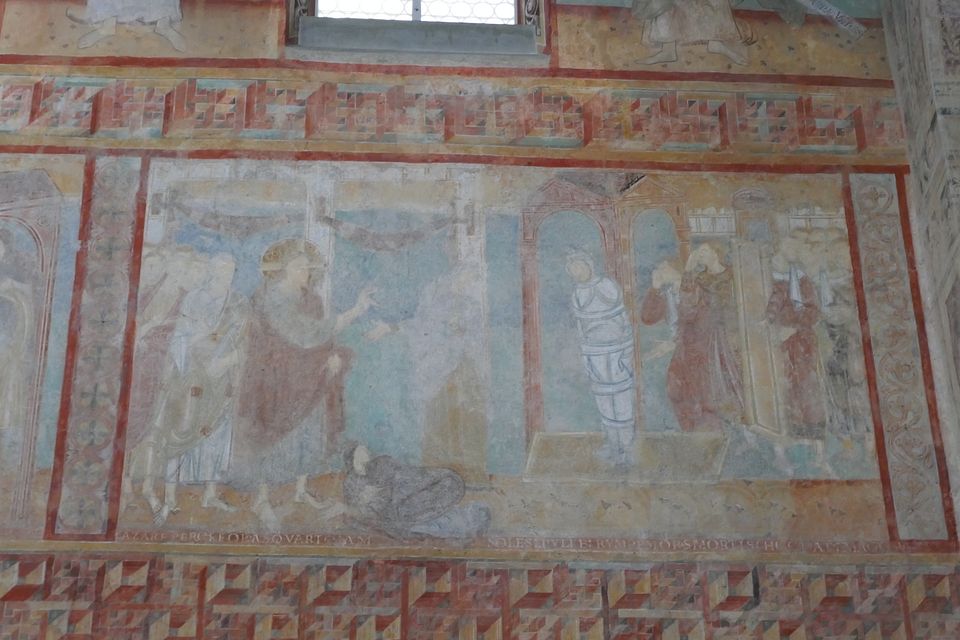

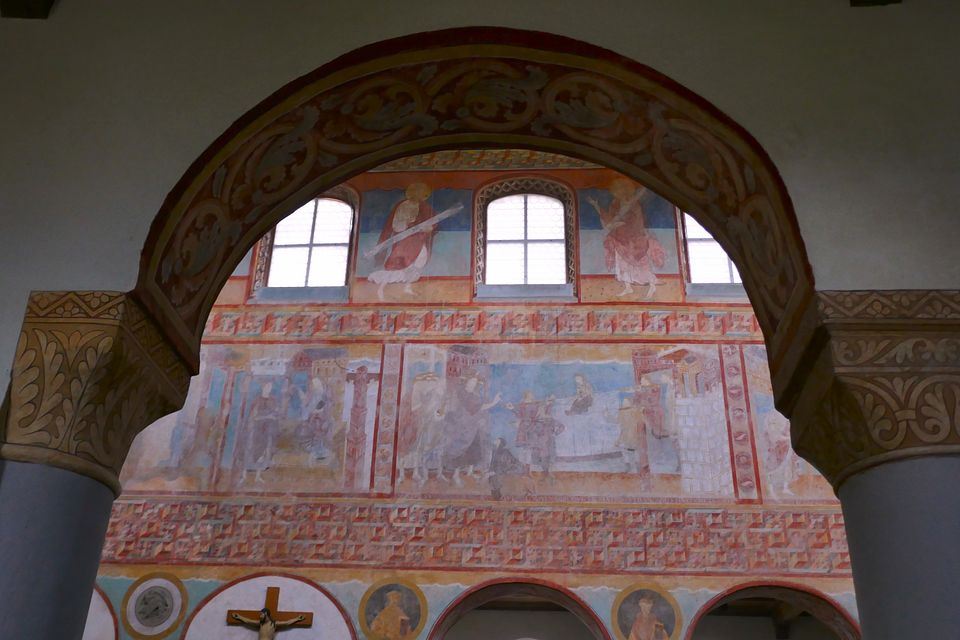
Now, during my time at Lake Constance, St. George's Day was celebrated. In case anyone was wondering what the dragon slayer saint from Cappadocia who for some mysterious reason became adpted by the Brits as their patron looks like these days, wonder no more!
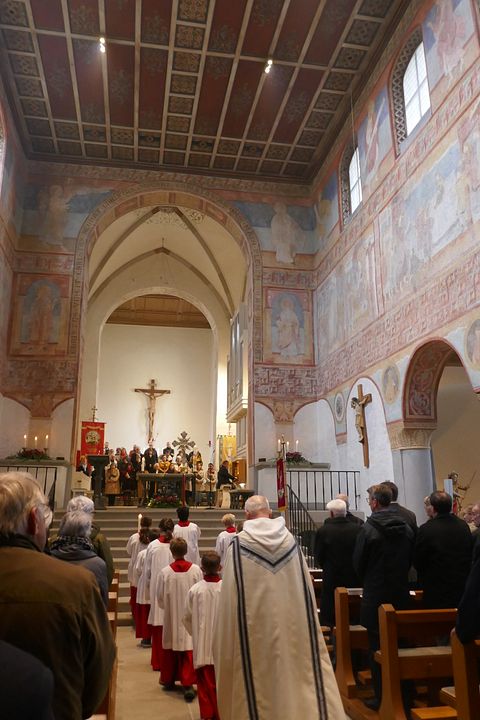

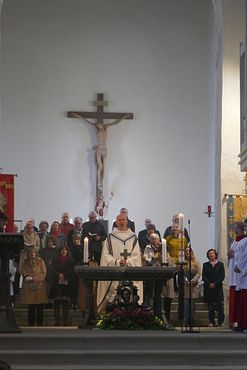
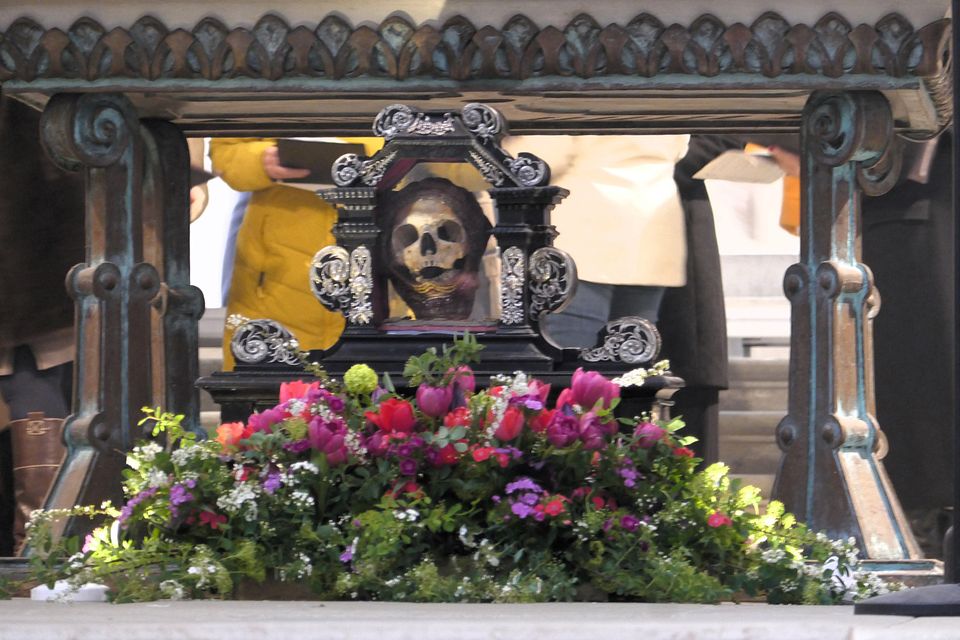
In addition to a beautiful local choir, there was also the citizen's orchestra, which was supposed to play outside, but courtesy of the rain couldn't:
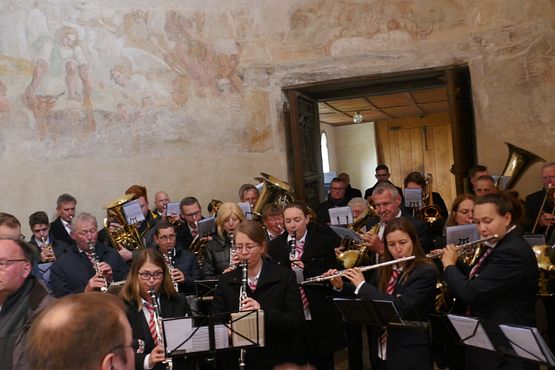
What remains of the main monastery is in Mittelzell:
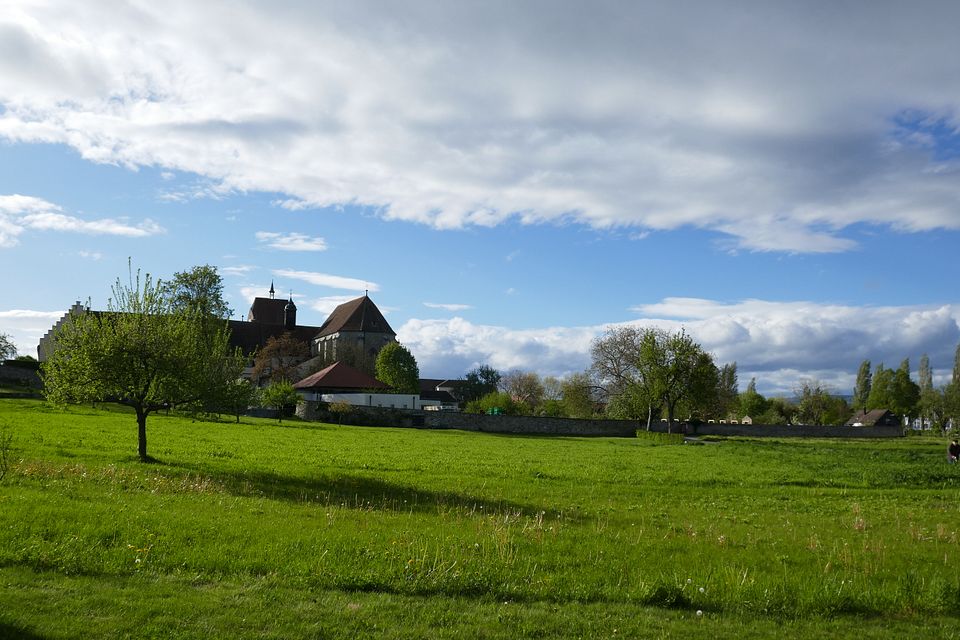

The minster there is dedicated to Mary and St. Mark the Apostle. The later because this happened: first the Reichenau monks got the relics of minor saint from late antiquity, St. Valens. Then, two hundred years later, they felt the need for someone more famous, even more famous than St. George, and lo and behold, via dreams it was revealed that Ratolf, the abbot who got the St. Valens relics, really had been given the bones of St. Mark by a Venetian chum, barely a year after the Venetians themselves had kidnapped them from Alexandria. What's that you say about St. Mark in Venice? Clearly, they don't have the real deal. And so the Reichenau citiizens insist to this day.

The last surviving church is in Niederzell and called St. Peter and Paul. It got the firmest baroque overhaul but also has some medieval paintings inside:
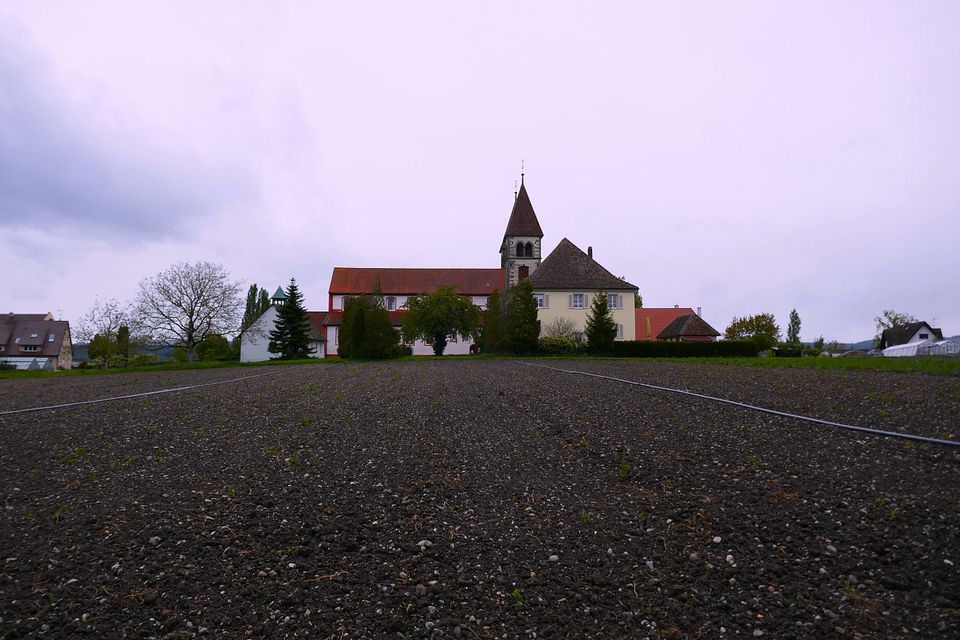

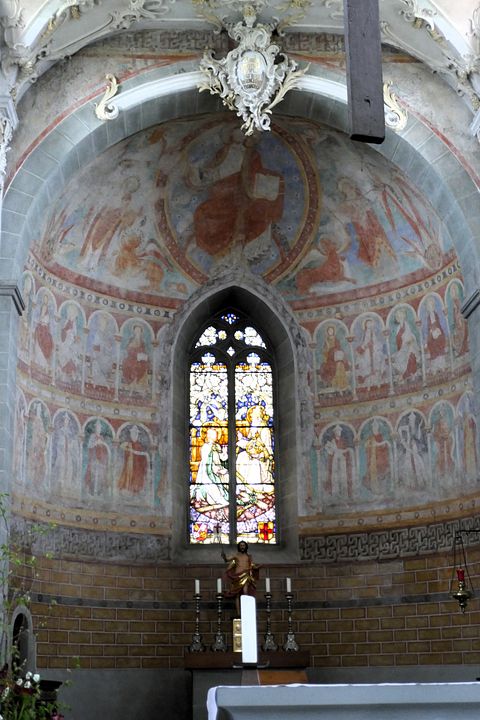
One moree island overview:
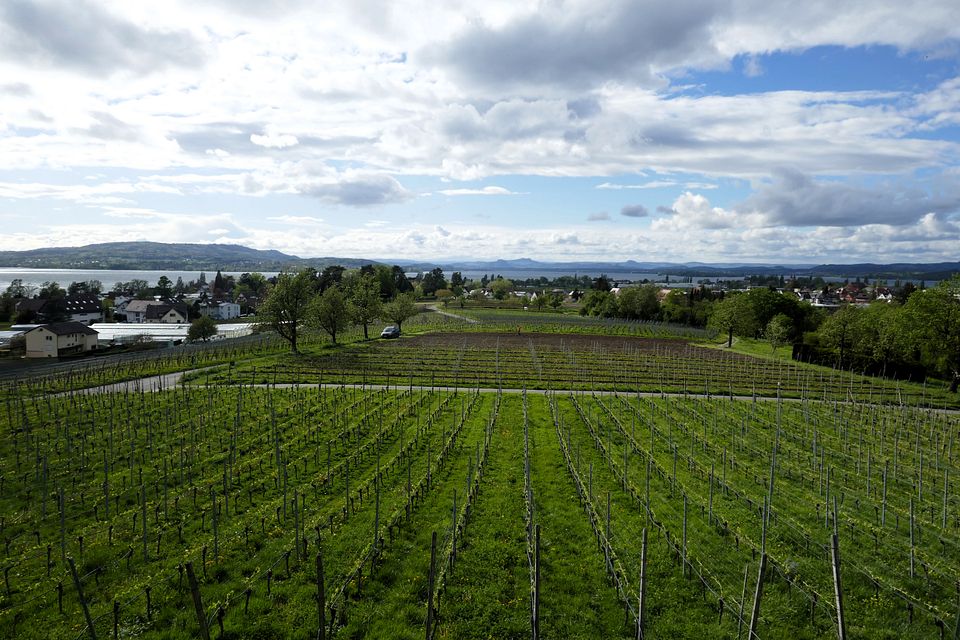
One great help for Lake Constance visitors is that there's a ferry for cars to use between Constance itself and Meersburg on the other side of the lake. Take it, and spare yourself 70 kilometres country road around the lake. Which is what I did when visiting Meersburg, that medieval delight with Germany's most famous female poet's final resting place.
Meersburg
The city of Meersburg, called after the castle presiding over it. Come the Reformation, the Bishop of Constance eventually decided to move residences from Constance to Meersburg, to said castle; living in a medieval castle provded too uncomfortable, and thus was the New Palace built (the pink building), which became the Bishop's residence for the next centuries.


The New Palace was later used as a hospital for some years, which is why the interior didn't survive and had to restored (partly), but it's still delightful to watch. BTW, reading about its prince bishops is a strange deja vue if you're from Bamberg like me, because there are Stauffenbergs and Schönborns all over the place, just like in my hometown, itself also the seat of Prince Bishops.

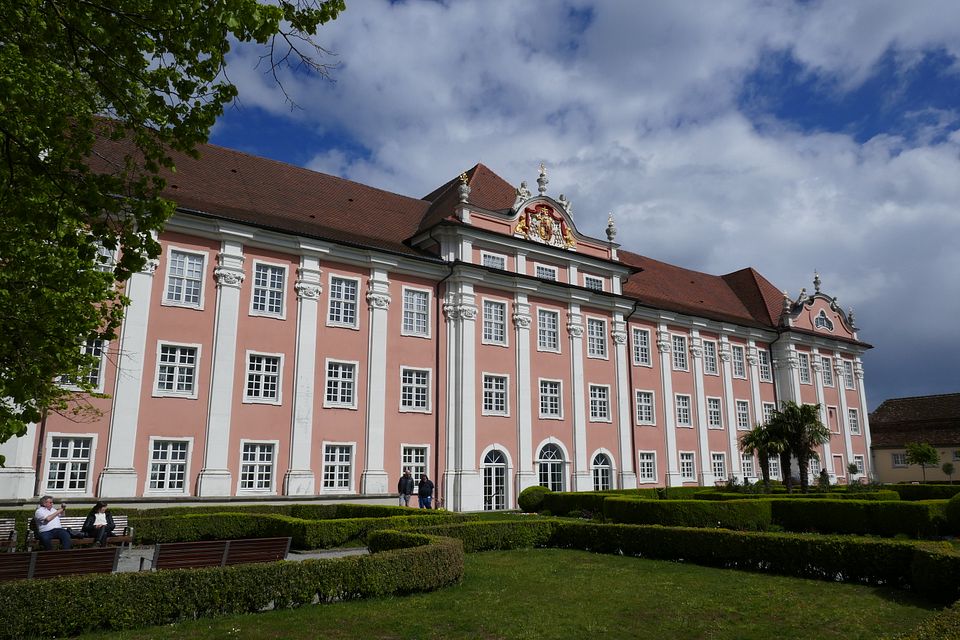
The castle, the literal Meersburg:


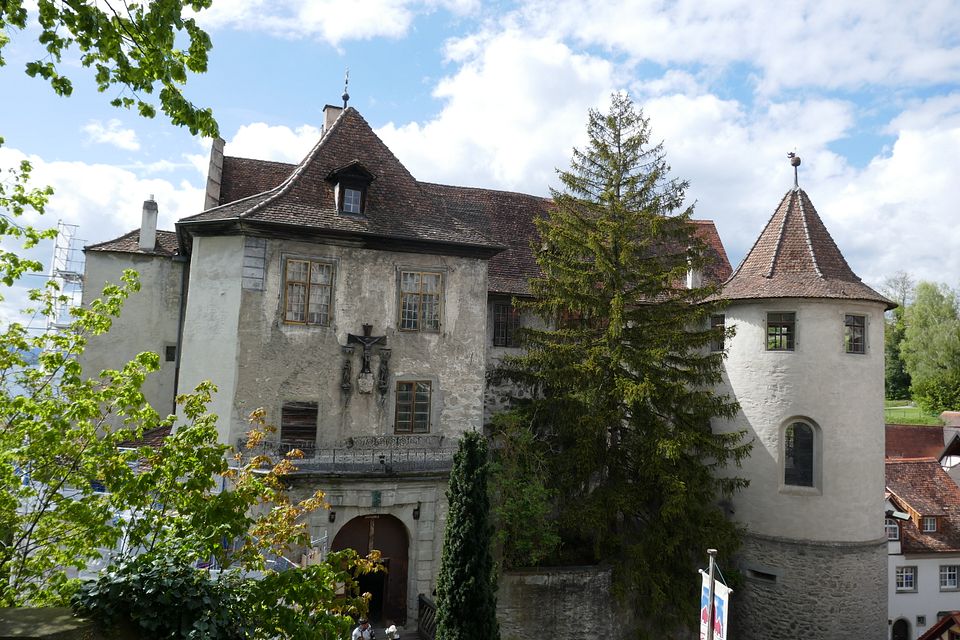
In front of the main entrance is the bust of a lady you'll see more of, 19th century poet Annette von Droste-Hülshoff. It's always hard to judge such things, but her claim of being Germany's most famous female poet is better than most. She's not a local girl, but from near Münster in Westphalia where she spent most of her life. However, her sister Jenny married one noble obsessed with the middle ages, Joseph von Lassberg. At this point, the castle had been unwanted expensive goods ever since the bishops had ditched it in favour of the New Palace, and thus Laßberg could aquire it, he and Jenny moved in, and that in turn meant Annette visited Jenny during her last decade of life repeatedly, writing some key poems of German literature there and eventually deciding to take up residence at Lake Constance for good. She bought another bit of real estate the Church was trying to get rid off to live in near the castle, the "Fürstenhäusle" , which you'll see later from the first money she earned when her poetry finally started to sell and succeed, started to furnish it, and then tragically died of chronic ill health before she was able to move in permanently at little more than 50 years of age.
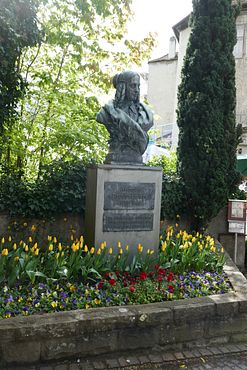
Because of the Annette factor, the castle's rooms today are divided between medieval-themed rooms and 19th century Annette themed rooms. On Saturdays, which is when I was there, citizens of today's Meersburg show up in medieval gear doing some neat cosplay for the tourists.


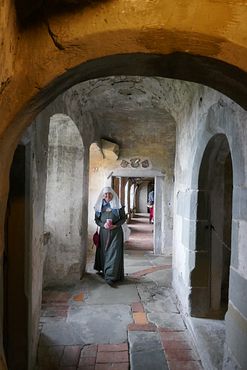
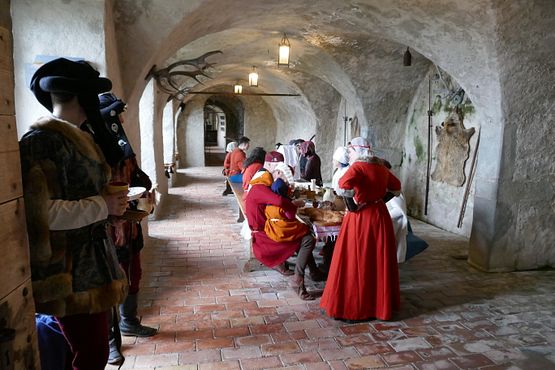



The 19th century furbished rooms where Annette used to live when staying with sister Jenny illustrate why the mid 19th century wasn't an aesthetic highlight of German interior design, but they are touching to visit nonetheless. The bedroom where she died:

Her writing room with some manuscripts:


As mentioned, Annette - who had always lived first with her family, then after her father's death with her mother and sister at her mother's widow estate, and then with Jenny and her husband - had bought herself her first "single" residence which is located not far away from the castle but still located somewhat higher in the vineyards, and is nicknamed "little princely house". Little being the operative word. But it looks adorable and she was really happy about getting it:

It has an spectacular view over Meersburg and the lake:
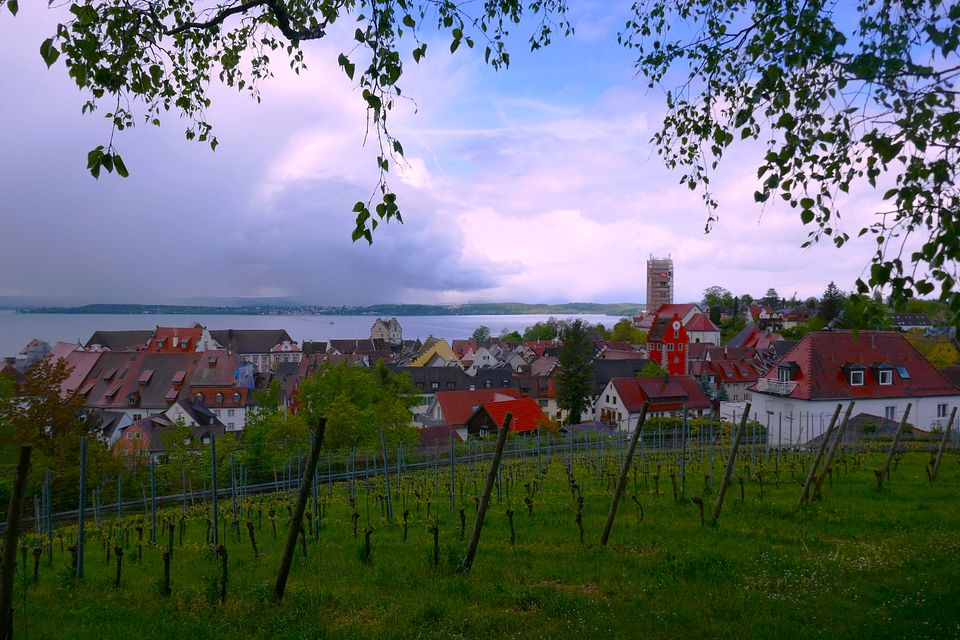
Here's the interior, which has been reconstructed, because after Annette's death and then Jenny's, Jenny's daughter's inherited the house and actually lived there, and thus it was passed on through Jenny's descendants who lived there right until the 1960s. Only then was it repurposed as an Annette museum, and because Annette had described how she'd furnished it in the intention of moving in, refurnished to look like what she wanted:
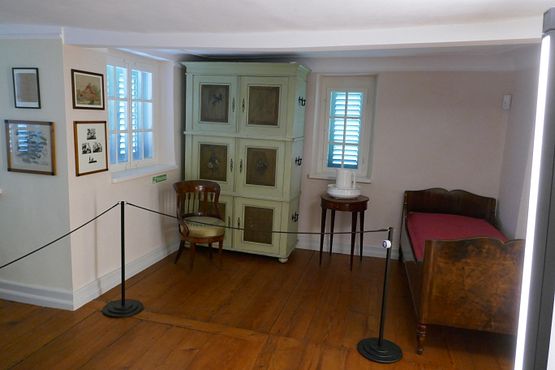
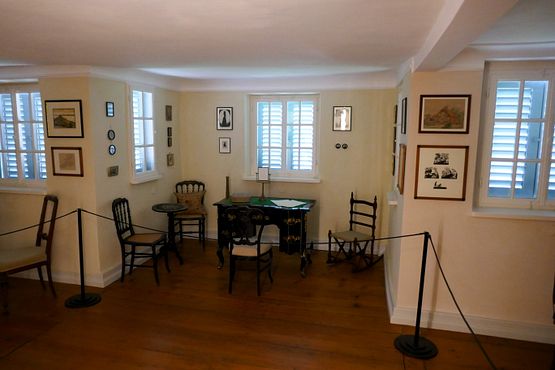
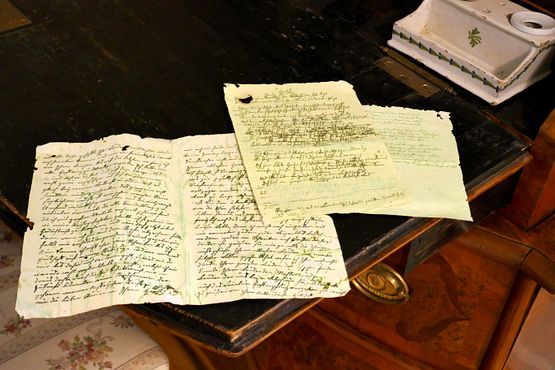
Annette - along with various family members via Jenny and a friend - is buried at the local cemetary:
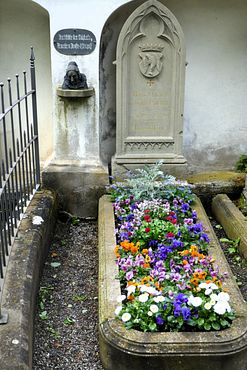
The small town of Meersburg itself is delightful to walk through, looking thusly:
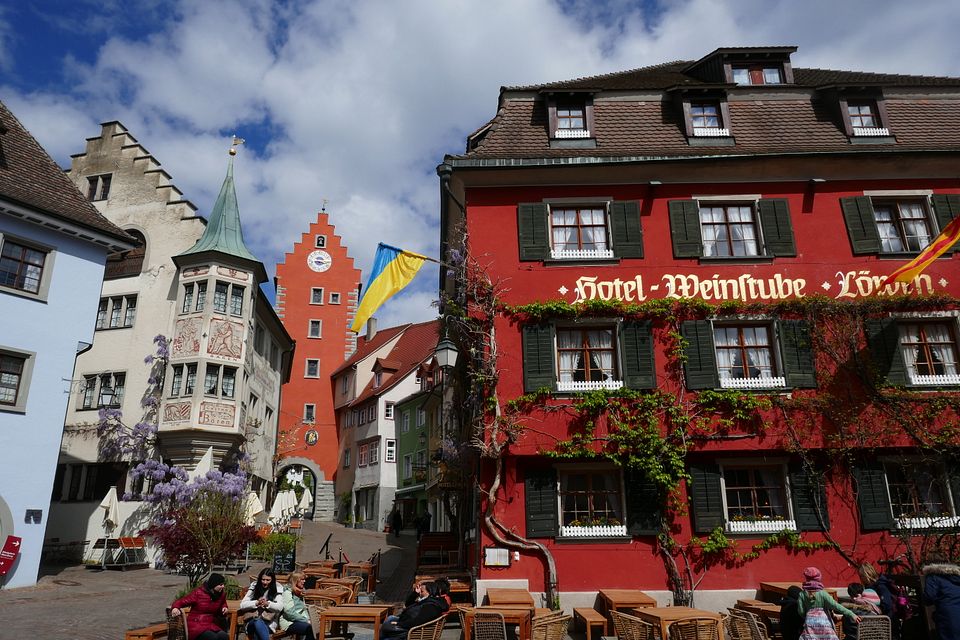
Have two more panoramic views, one from the Fürstenhäusle and one from the New Palace:

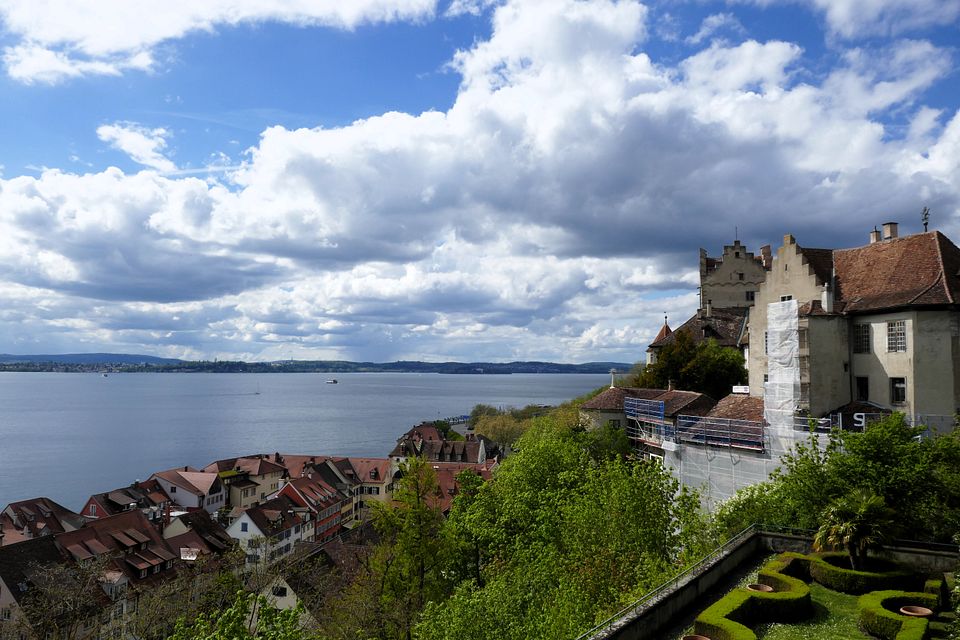
Next, I visited Salem. No, not the one with the witches. Or the vampires. The other one. Behold:
Salem
Salem was another of those early medieval wealthy monasteries. In this case, the medieval buildings burned down in spectacular fashion, and then the whole estate, monastery and church, was rebuild by one Abbot, Anselm by first name, who squared off against the Bishop of Constance (by then a close neightbour because of the removal to Meersburg factor) in opulence, with the result that today's Salem, architecture and interior wise, is an example of southern Rokoko at its finest. Then, Napoleon and the secularization happened, and Napoleon handed over Salem to his new in laws the Margraves of Baden (in laws via the Stephanie de Beauharnais/Karl von Baden marriage), who took the place as their main residence. They still partly live there, but more importantly for German cultural history, Max von Baden, last Chancellor of the short lived German Empire, gave it to his faithful secretary, right hand man and founder of Reformpädagogik, Kurt Hahn, to found a school in, which Hahn did. When the Nazis took over, Hahn fled to Scotland and took the school idea waith him, founding Gordonstoun, aka the school Prince Phililp loved and Prince Charles hated. (The reason why Philip was there to begin with was the Baden connection, since the sister he was living with as a child had married into the Baden family.) Now, check out Salem, the main buildings:
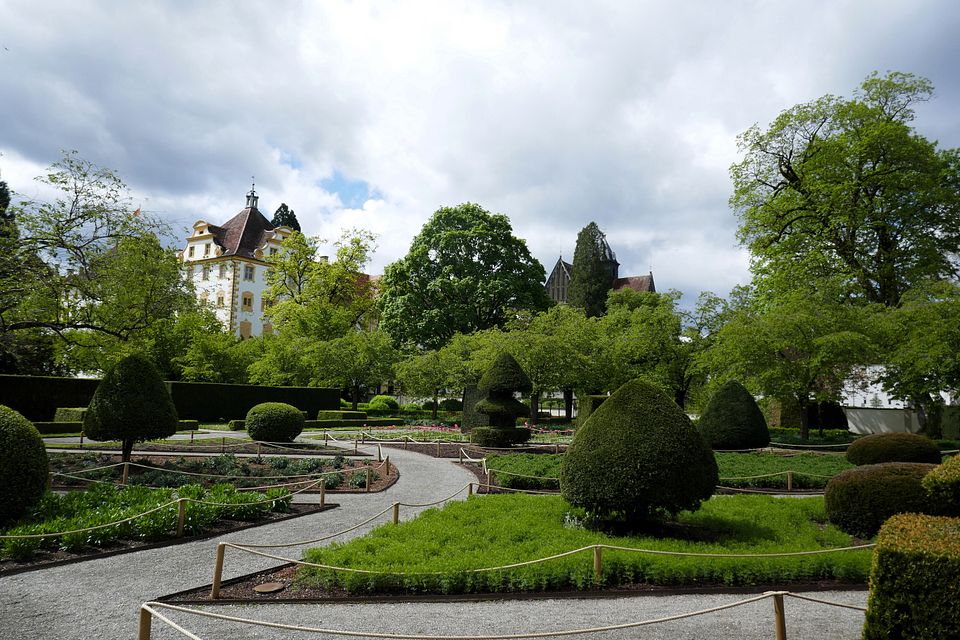
Main building:
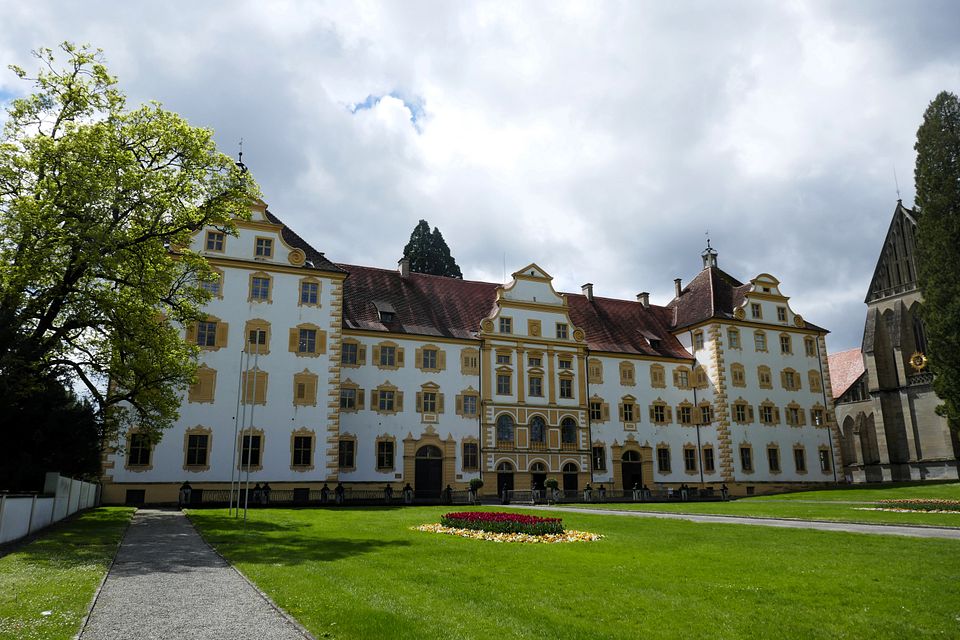
Seat of the administration today:

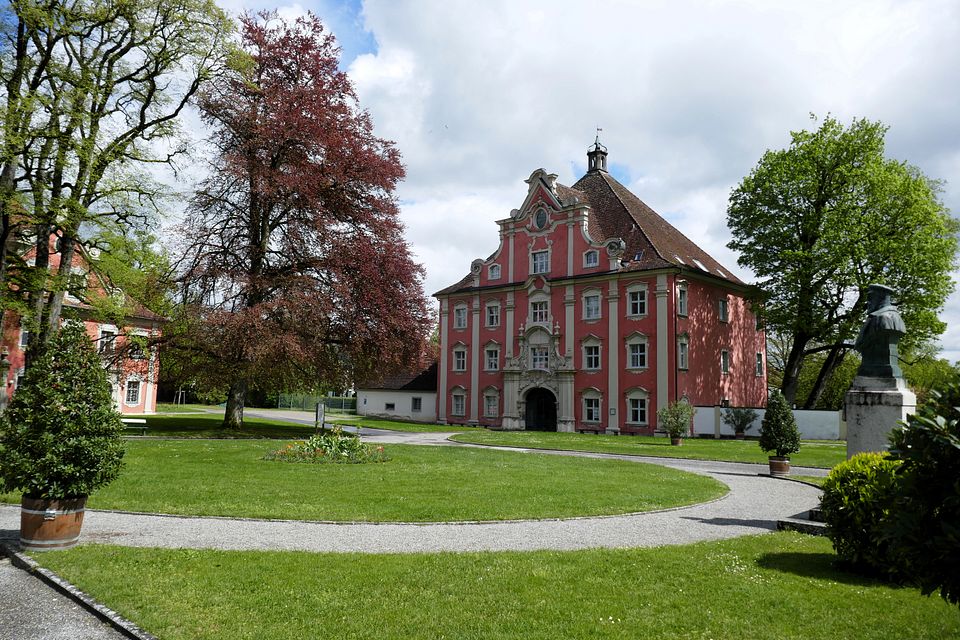
Formerly the buildings used for agrarian purposes in the monastery days:

As mentioned, the original buildings burned down in 1697 and was then rebuild in full late Baroque, early Rokoko splendour. Some bits and pieces of the original medieval building still exists, like these:

That's the medieval artisan immortalizing himself:

And because of the devastating fire, from this point onwards there were always fire extinguishers a plenty there. These are Rokoko fire extinguishers:
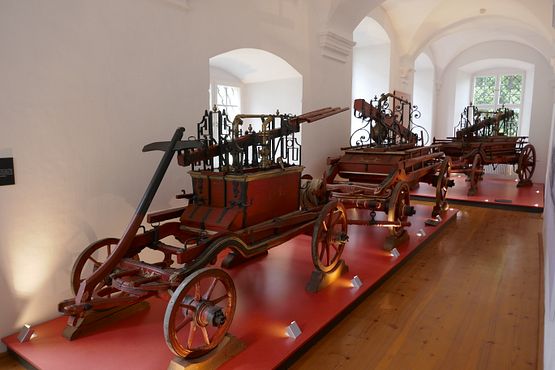
The door to the library was built like that of a modern bank:
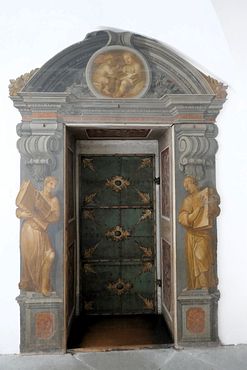
The library - which as opposed to the St. Gallen one is still in use, as part of the school, I'll have you know:

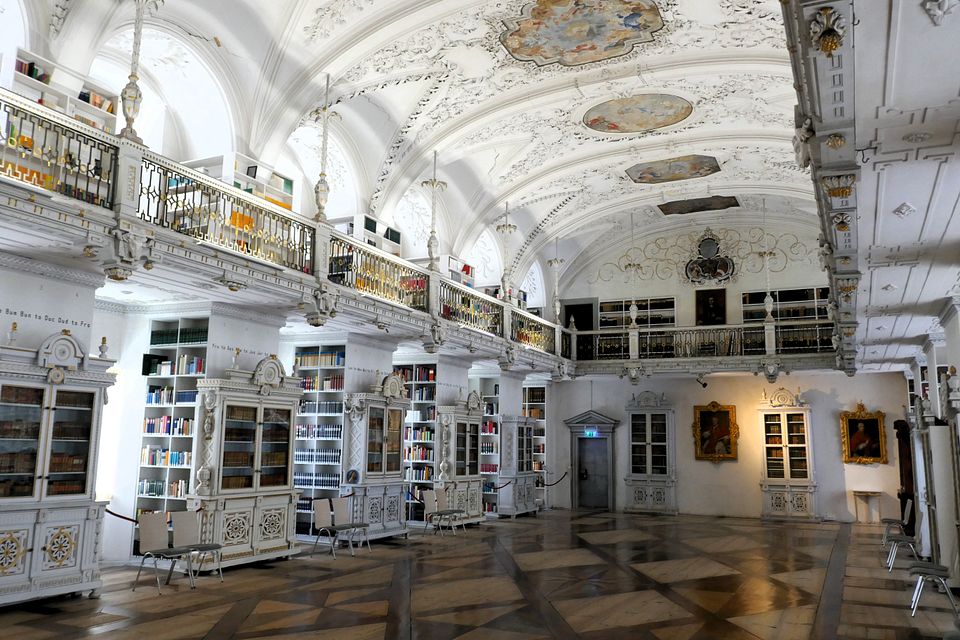
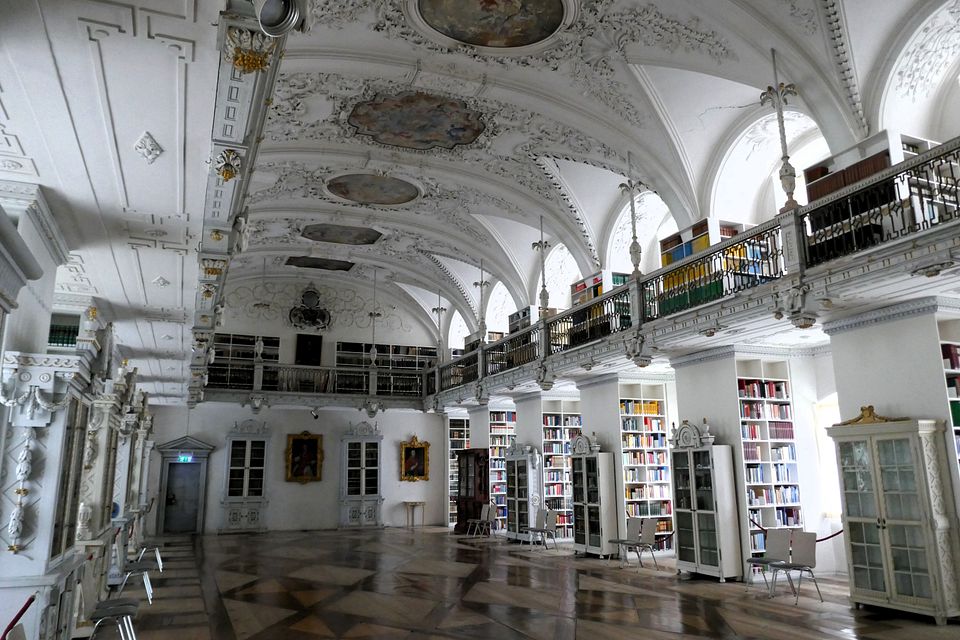
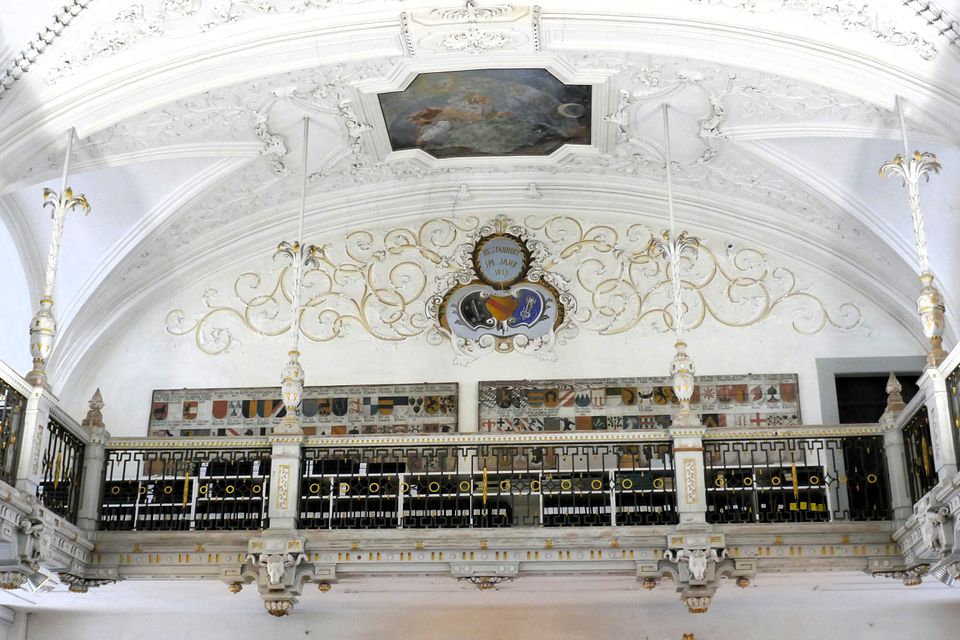
These are the residence rooms of Abbot Anselm the Rokoko guy who frequently clashed with the Bishops of Constance. (One reason why he never was ousted despite some efforts was that he was tight with Empress Maria Theresia.)
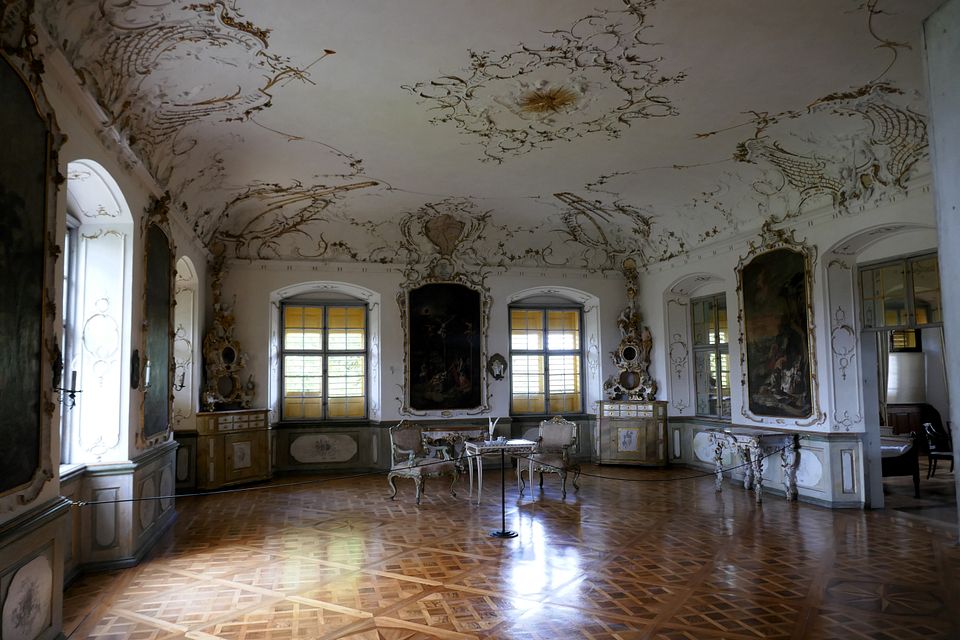
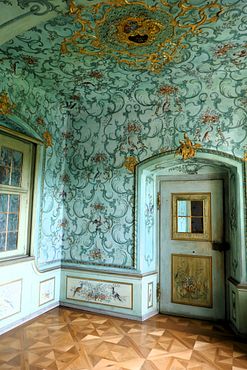
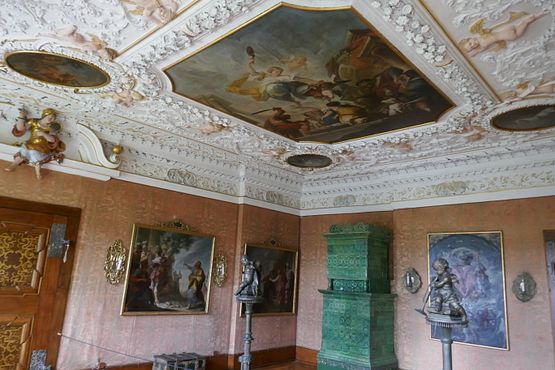
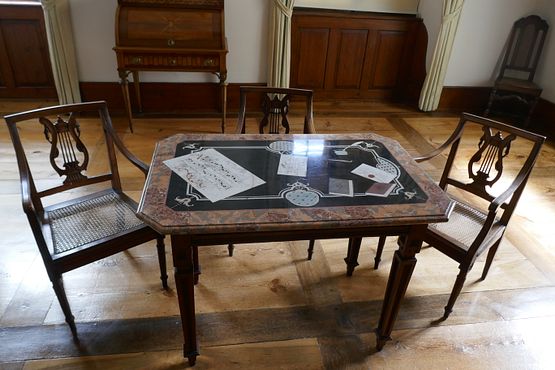
When the monks left and Salem was handed over to the Baden Margraves, they took the clocks themselves but left the extensive artful houses of the clocks, like this one:
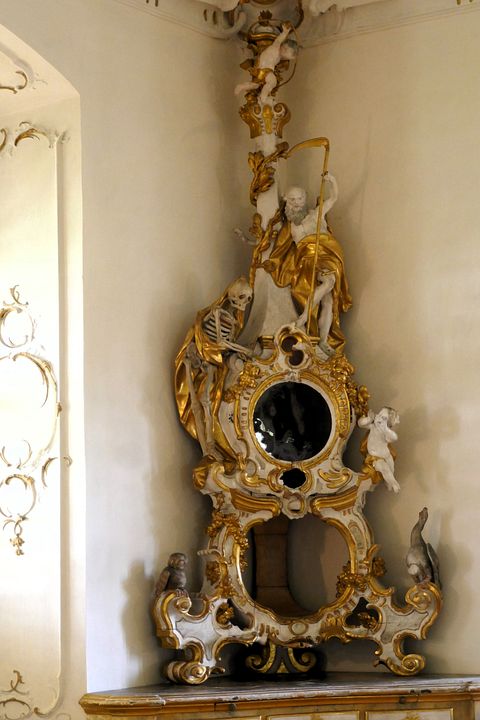
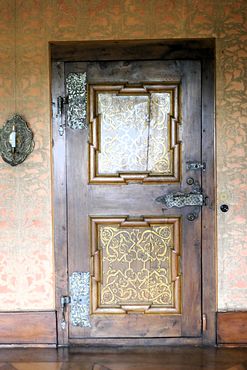
The most opulent room - for princely receptions and the like - is inevitably called the Kaisersaal, the Imperial Room, and given this is a South German institution, most of the Emperors depicted are Habsburgs, with two Luxemburgers and a Wittelsbach thrown in. (No Hohenzollern need apply.)
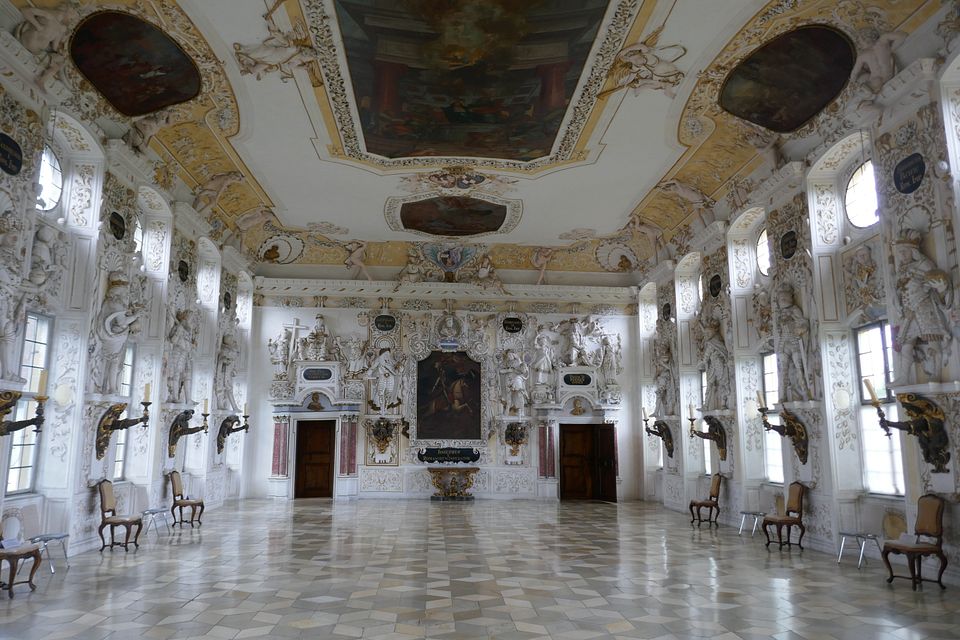

There are some nifty details. Like this remarkable statement, which means "There is no holy war". In a room which was built after the last major Austria versus the Ottoman Empire war, no less:
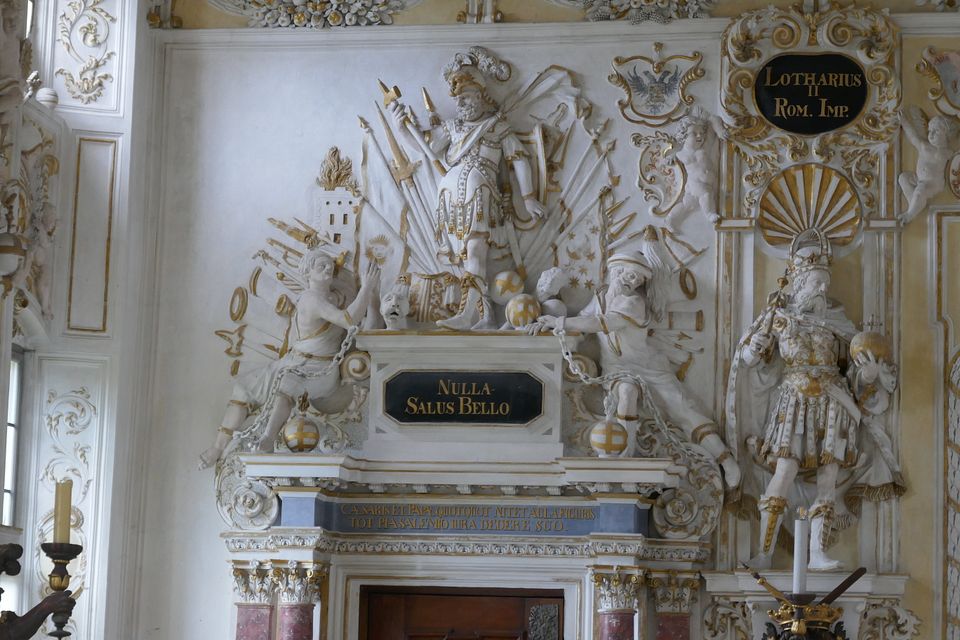
Also these:

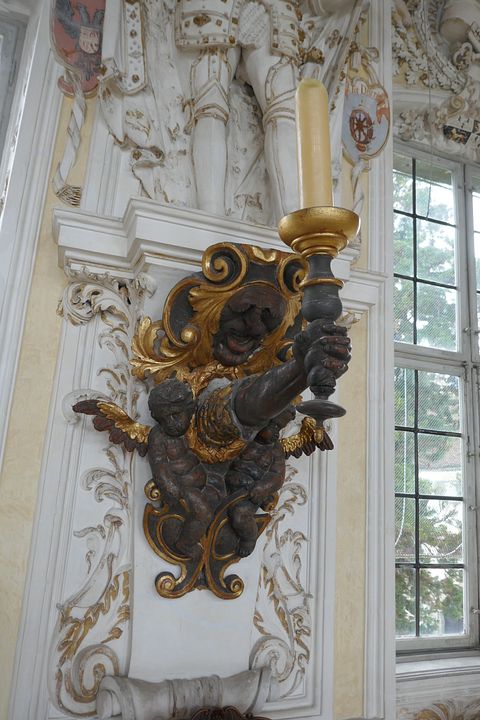
Then there is the room which used to be the dining room for the monks, and then was repurposed by the Margraves of Baden to serve as their Chapel. Why? Because by the time they acquired Salem from Napoleon, the Margraves of Baden were firm Protestants, and the main church of Salem was still a Catholic one. It is still used by today's Baden family as their church:


My favourite part is of course the spectacular oven which hails from the Rokoko monastery era:
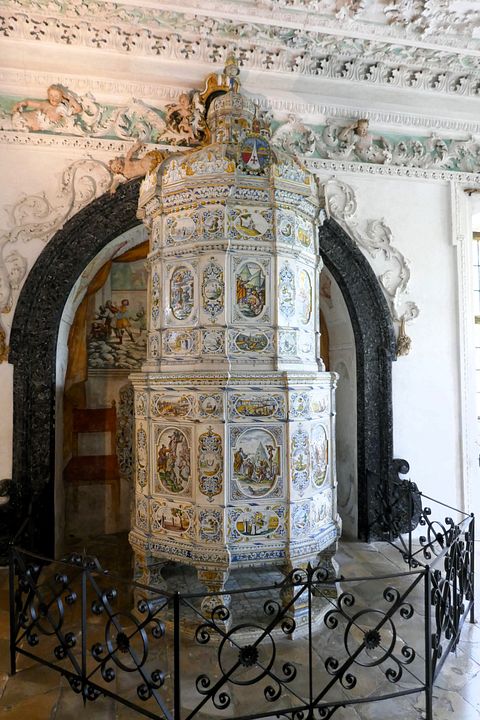
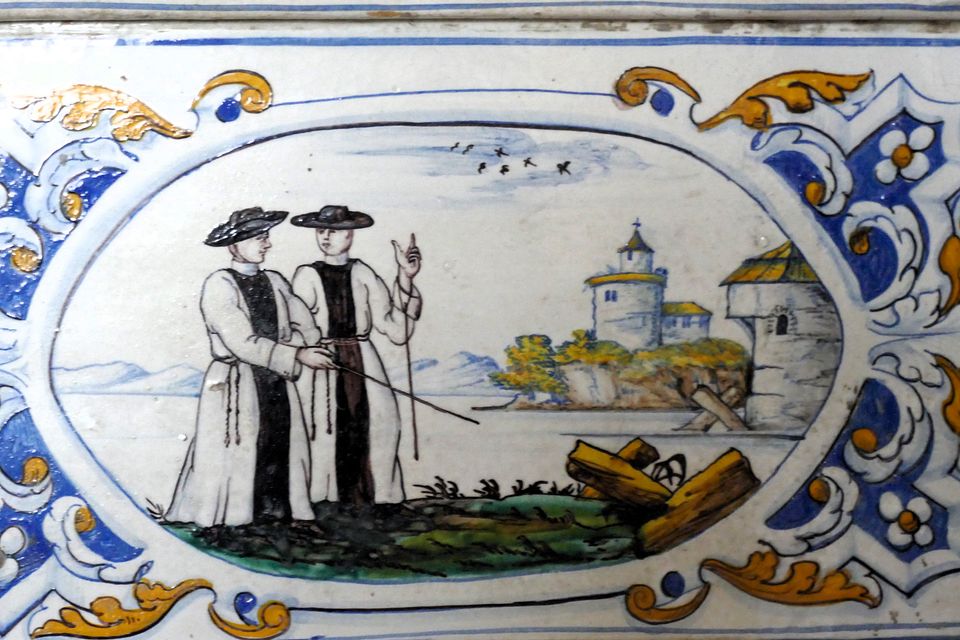
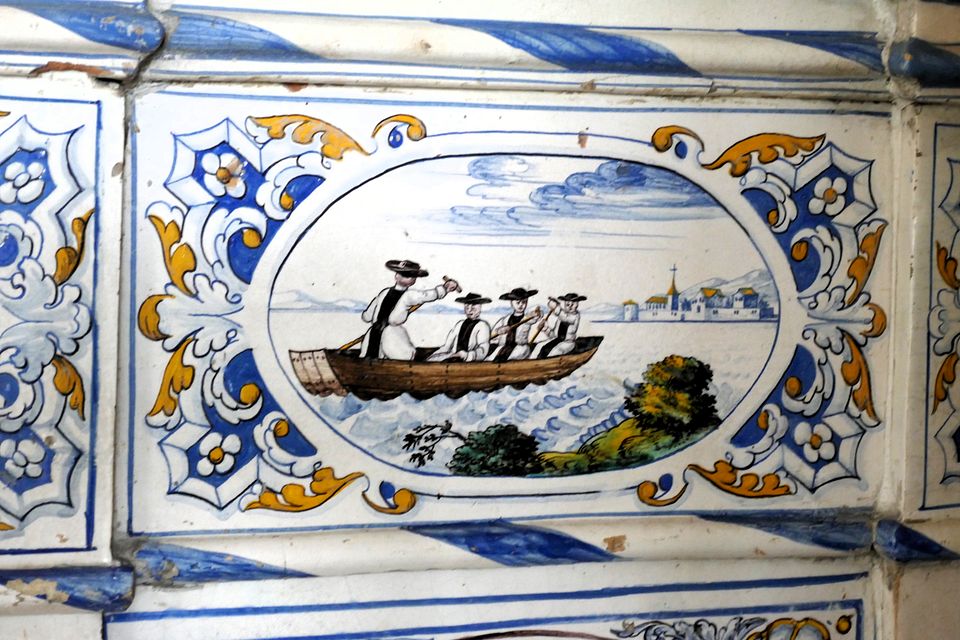
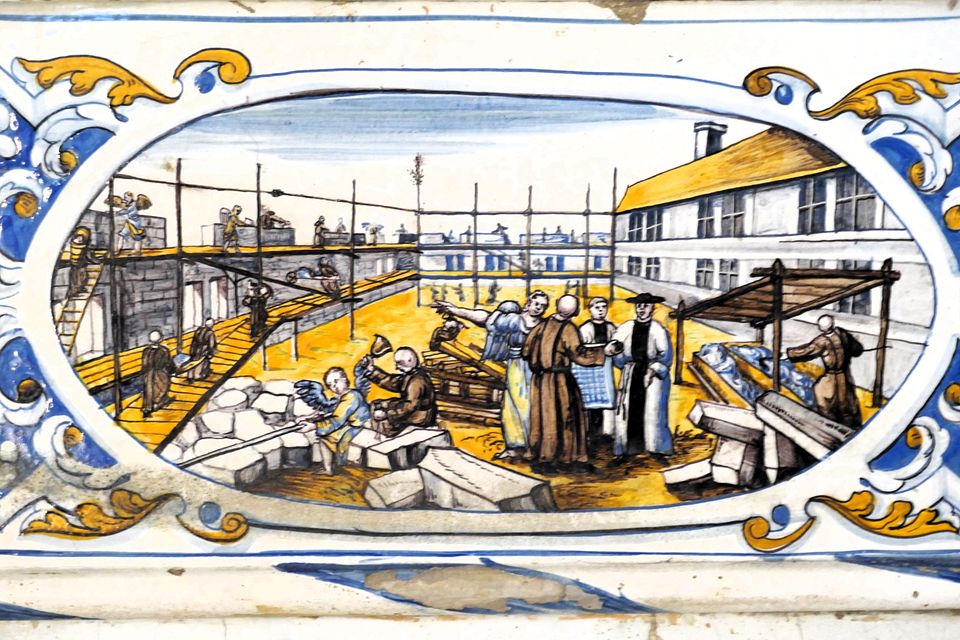
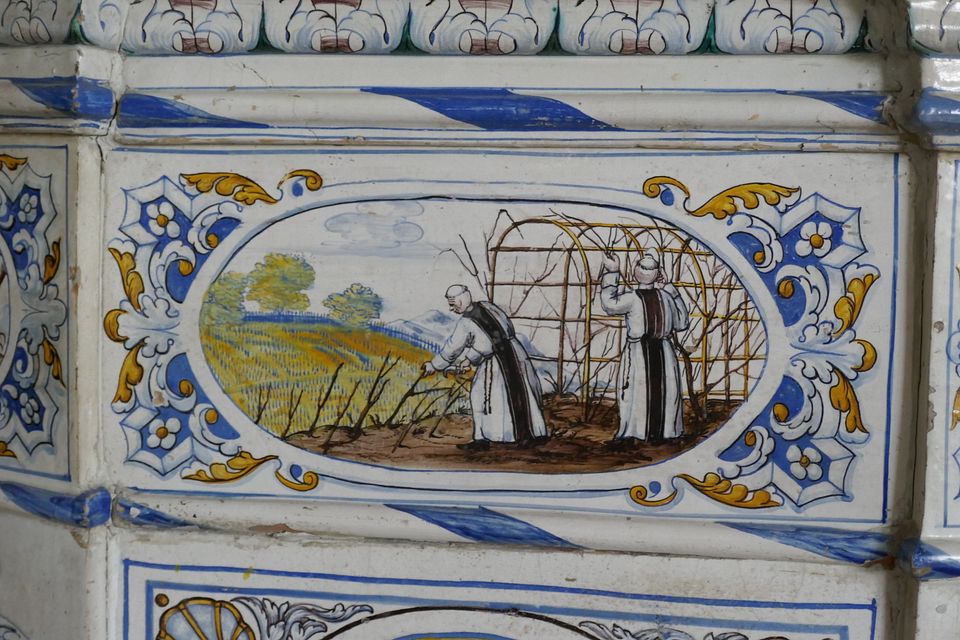
On to the church:


Now, by the time the church's interior was due, Abbot Anselm had heard news about France switching to a new more "classical" style. He wanted a new church, too! This is how Anselm, Rokoko guy who he was, imagined "classical" style:


Anselm also was responsible of rebuilding another burned down bit of old medieval real estate nearby, the Church St. Birnau:

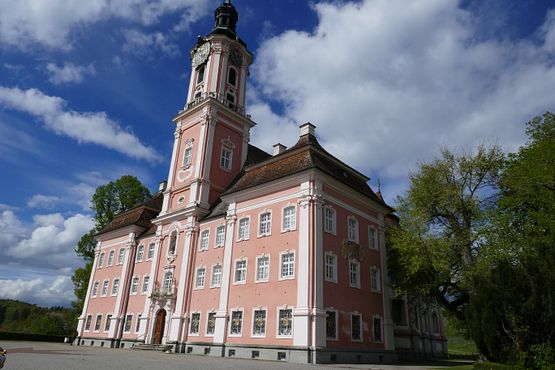
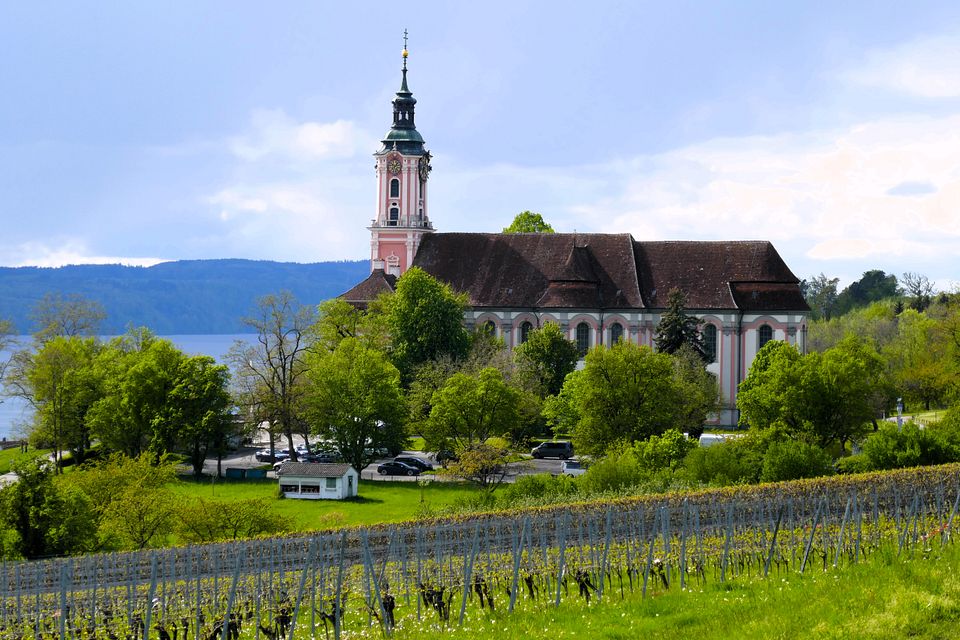
Which is entirely baroque in its interior, but you're not allowed to take photos, so I didn't, she said virtuously, having been observed all the time.
Before returning to the other side of the lake again via ferry, I paid a visit to Unteruhldingen, where a century ago, Bronze age settlements were found and reconstructed:
Unteruhldingen


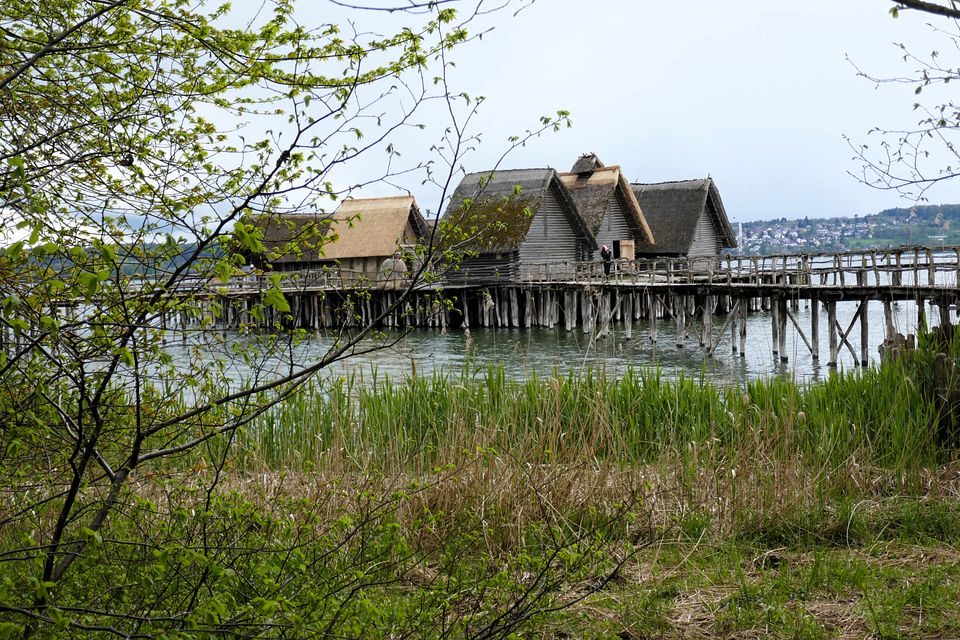
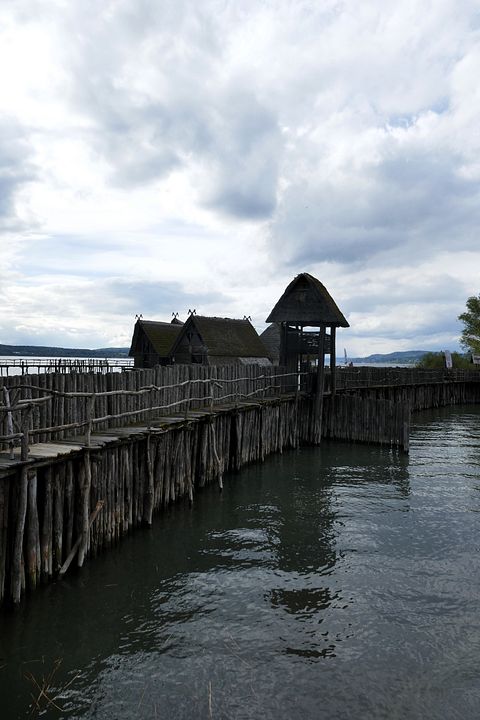
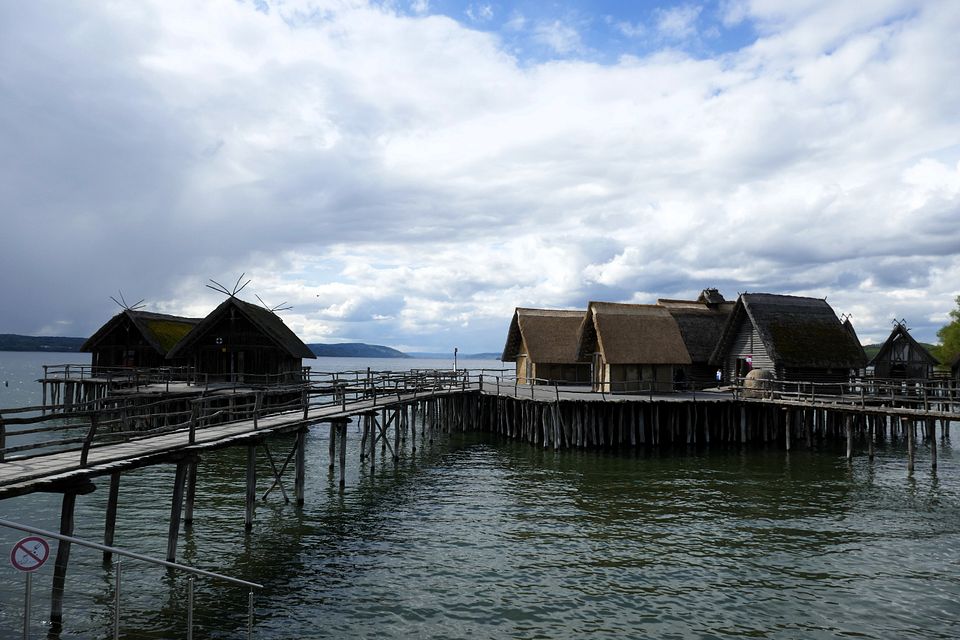
But what about Konstanz itself, you ask? The city that gave its name to the English version of the lake? (It's "Bodensee" in German.) The city that saw a Church synod, the depostion of not one, not two but three Popes at the same time, and the burning of Jan Hus?
Konstanz
There's a novella by French writer Balsac featuring the Courtesan Imperia who during the Council of Constance had Emperors and Popes as her lovers in said book. Controversial sculptor Peter Lenk used this story to craft the statue which today is the signature piece of the harbour:

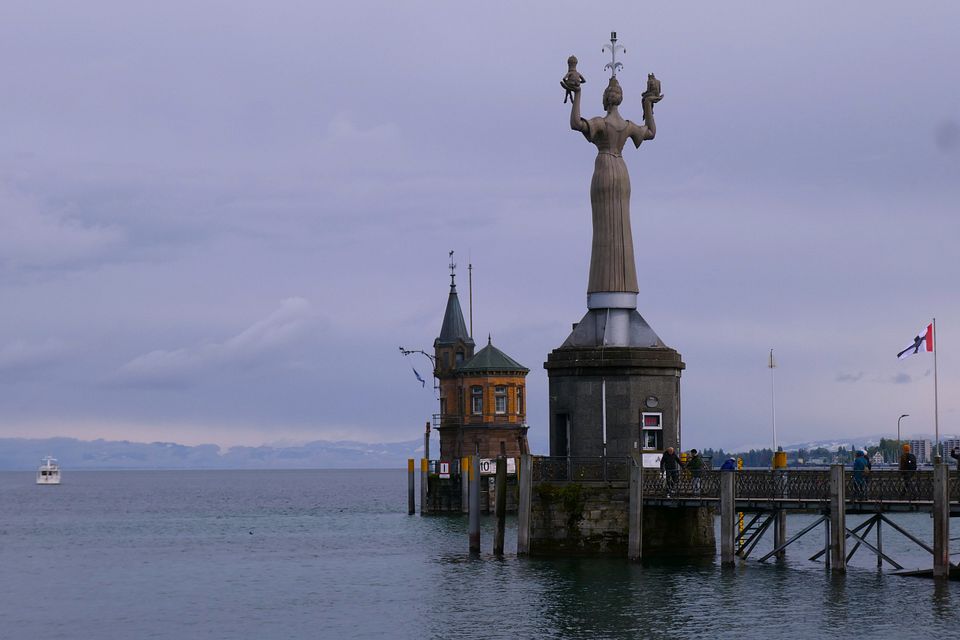
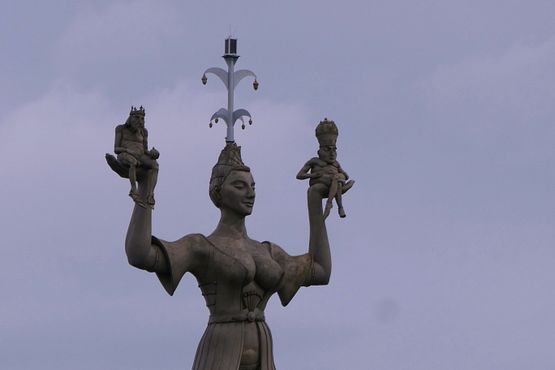
Speaking of the Harbour: let's start an overview of Konstanz, as seen from the highest church tower:
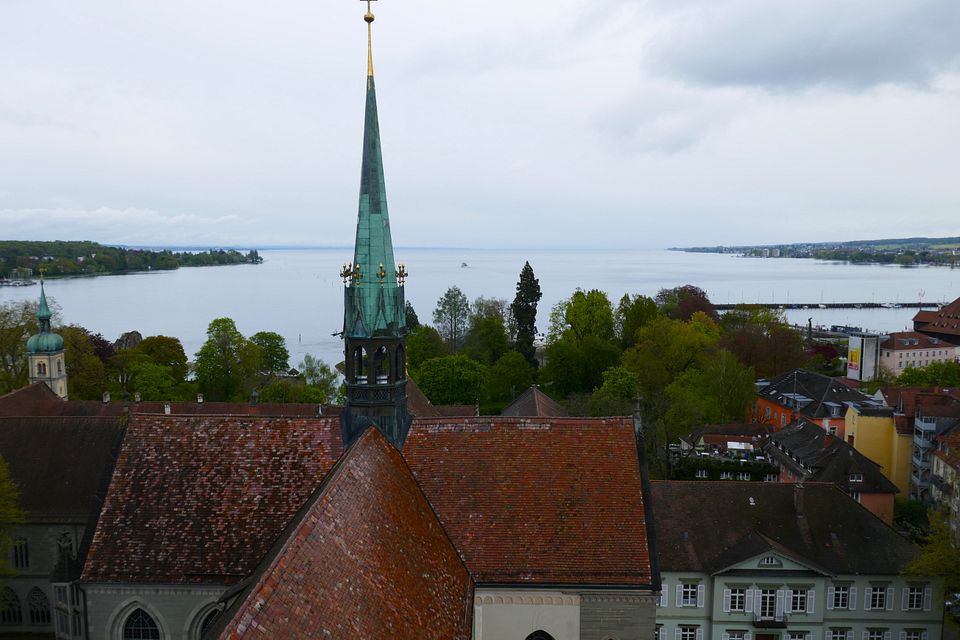
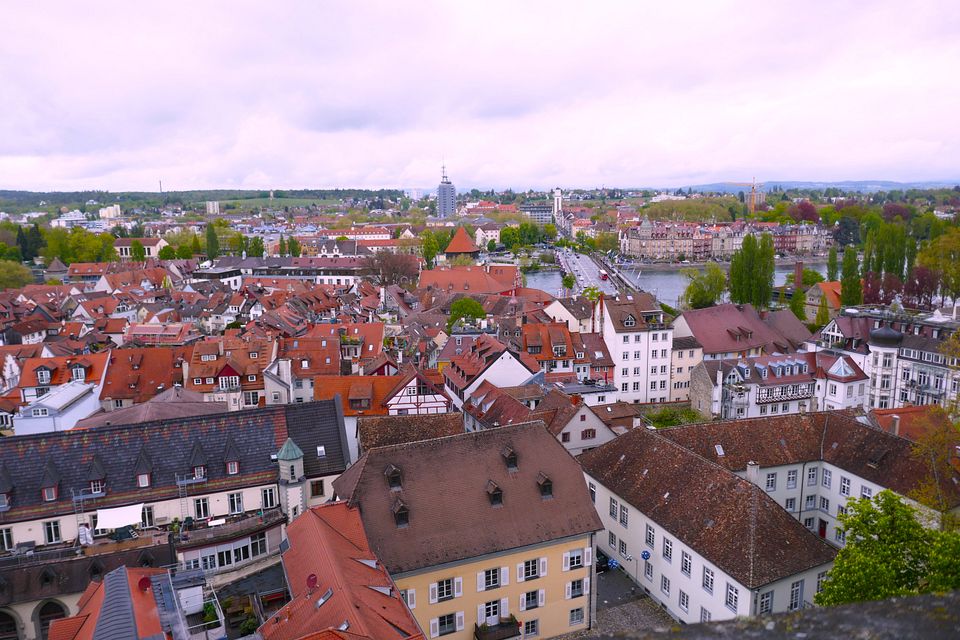

That would be the tower of the Minster of Our Lady. This one:

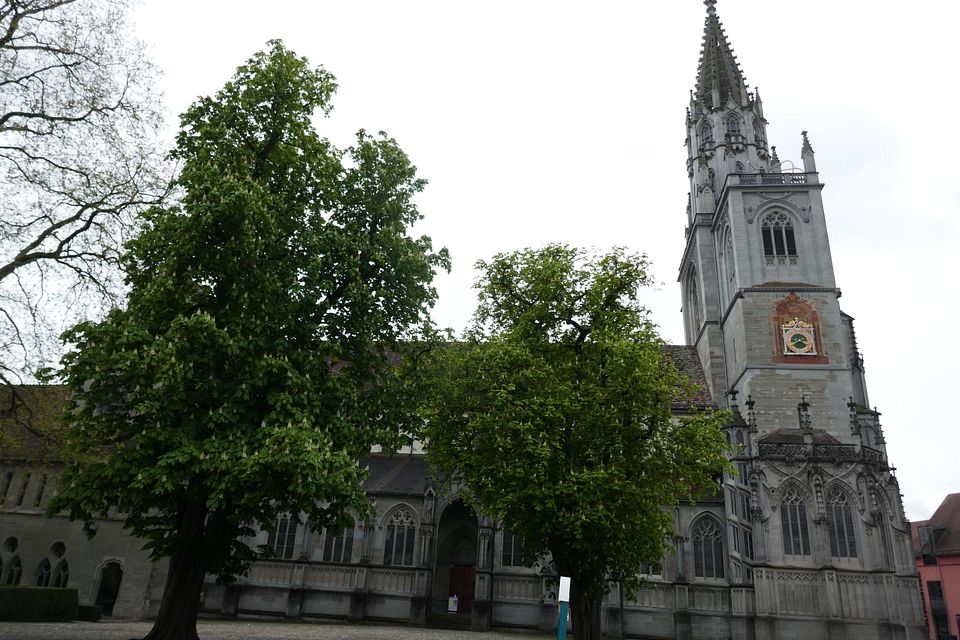
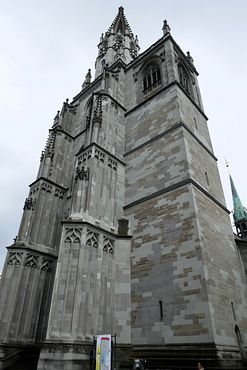
Compared with other churches, the main interior of the Minster is just okay:
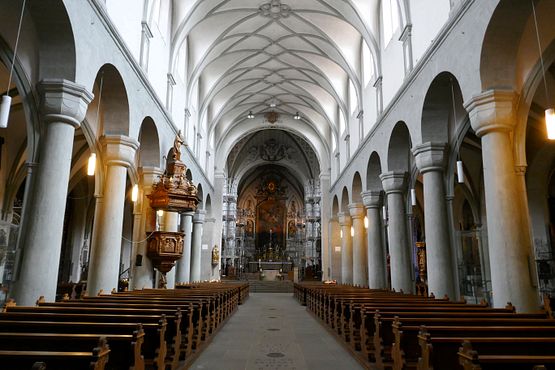
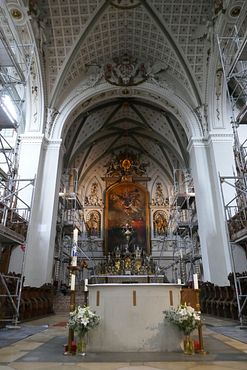
But it has some truly remarkable smaller crypts and chapels underneath. Like this one, featuring plates from the early middle ages:



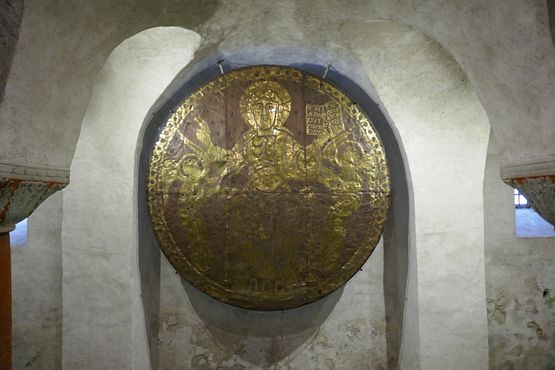
Or the Rotunda of St. Maurice.
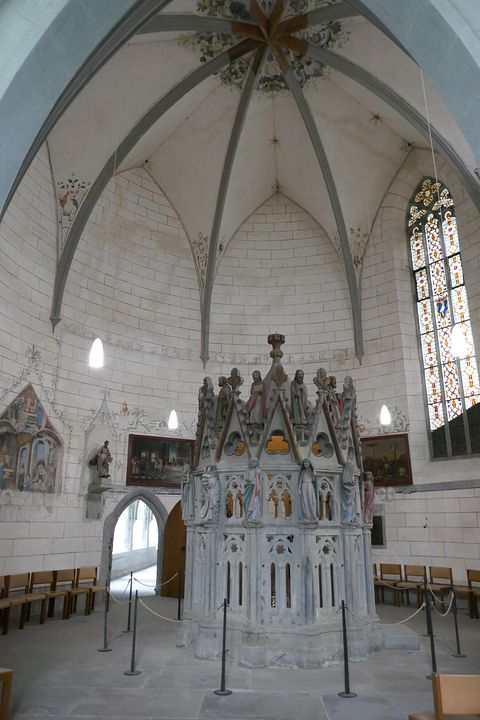
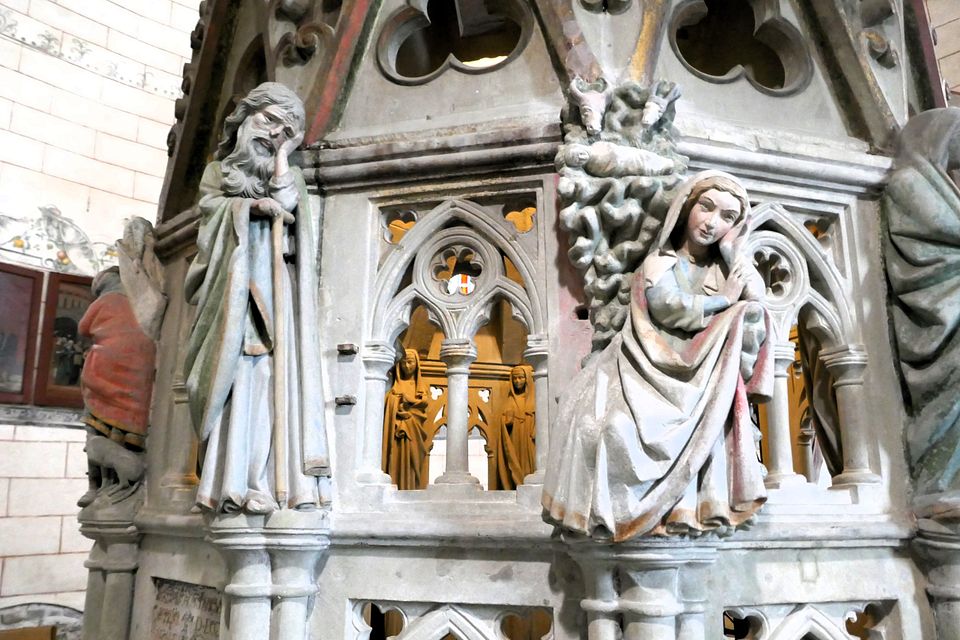
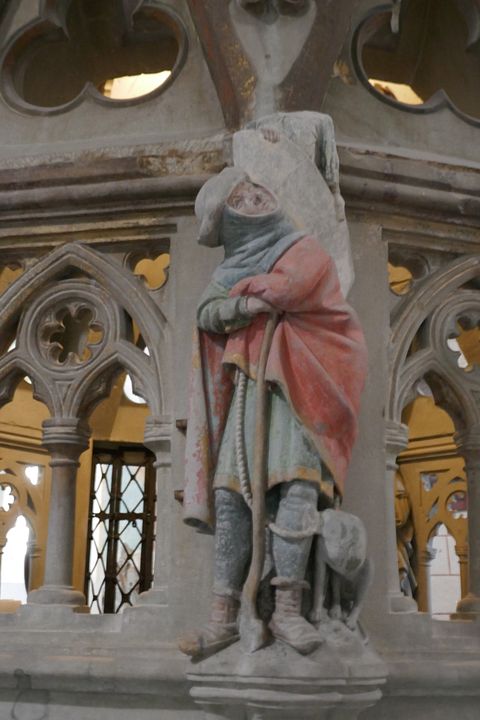
Or the chapel of St. Sylvester:
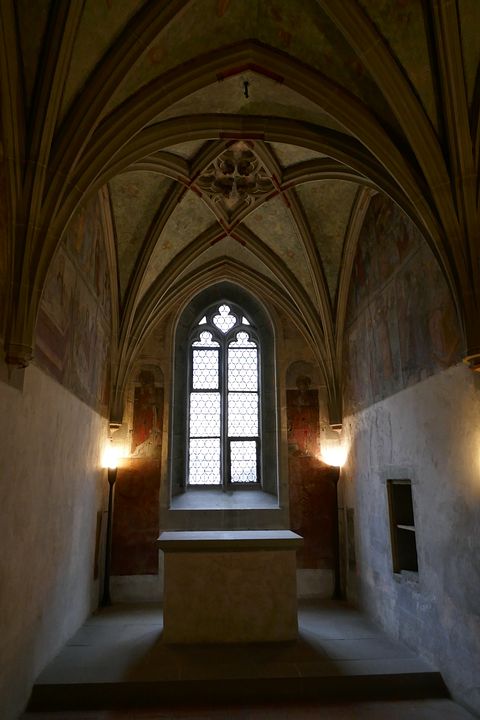
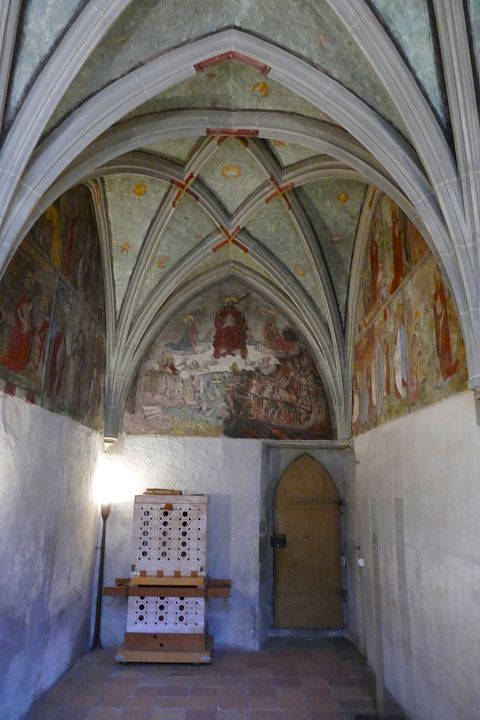
I had terrible weather when being in Konstanz, except for a few moments. This is the old city hall:
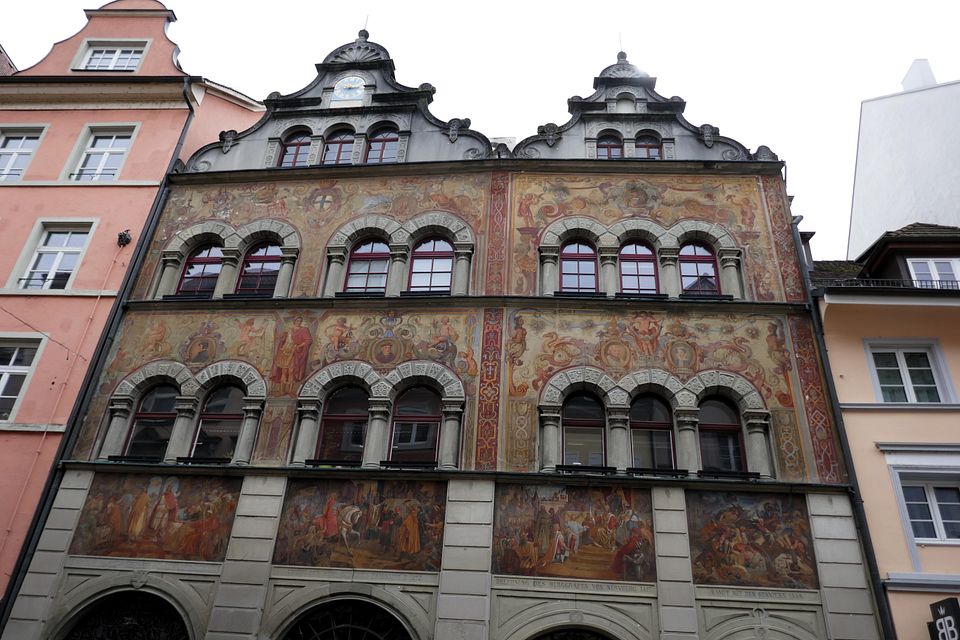
The main pedestrian zone with the Imperial Fountain (Kaiserbrunnen):

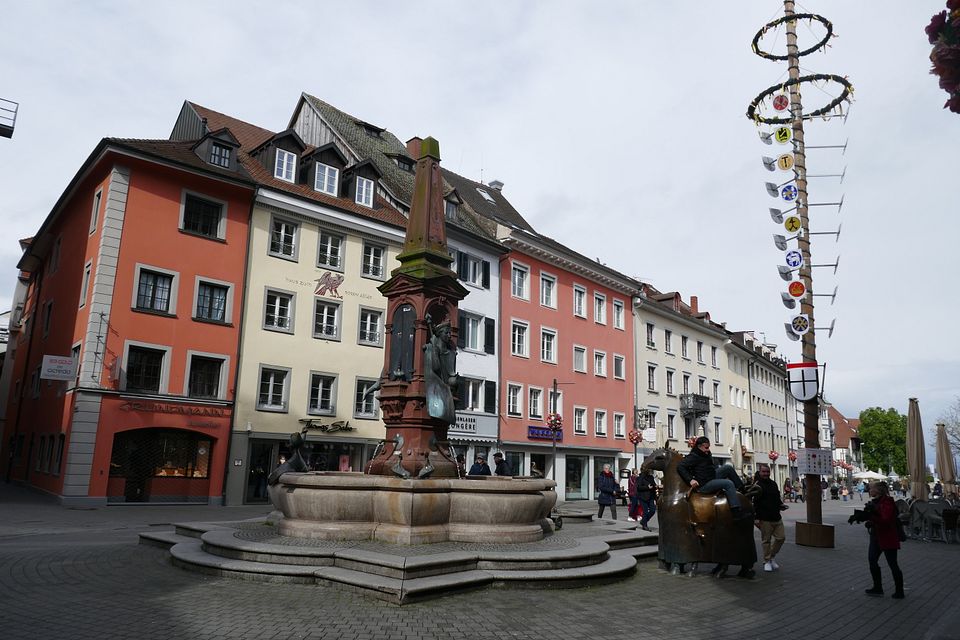
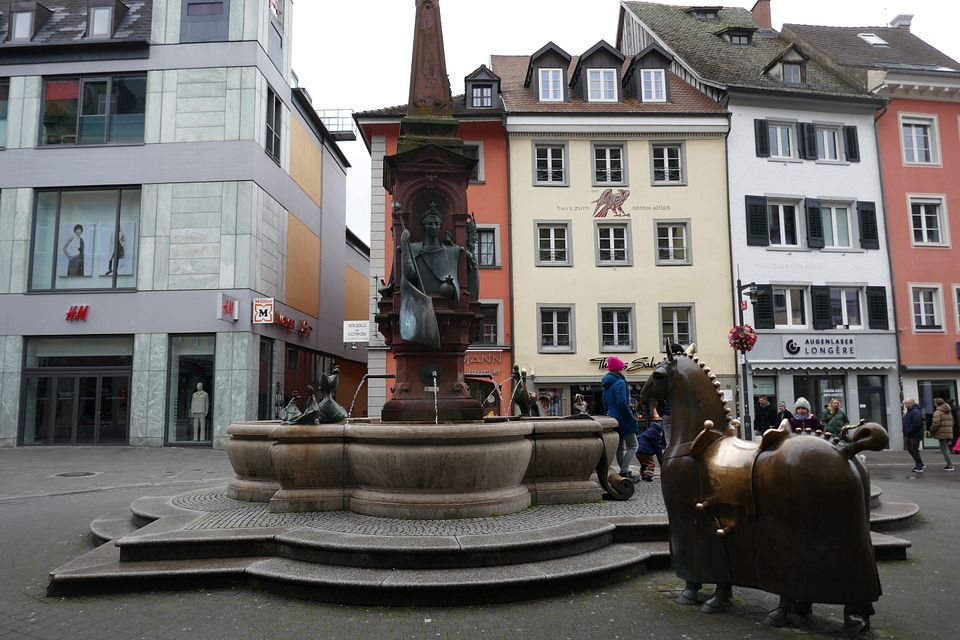
There are four Emperors rememnbered in that fountain - Friedrich I. "Barbarossa", Otto I "The Great", Maximilian I. ("the last Knight") and his second wife, and Friedrich II (Stupor Mundi, not Frederick the Great). The later doesn't show up in person, but the the horse having eight hooves is supposed to allude to the fast and secret trip of teenage Friedrich from Sicily through Italy and over the Alps, arriving in Konstanz literally just two hours before his rival for the throne, Otto IV, would have, and sitting down to eat Otto's prepared dinner. That's why said horse also has a "Augustale", a Roman style coin Friedrich II later had issued:
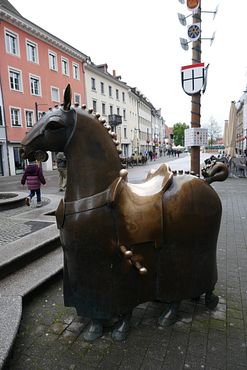

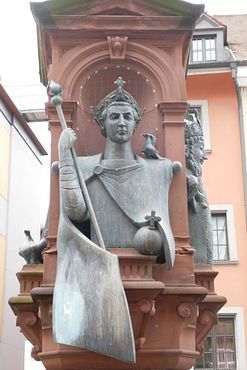
More Konstanz buildings:

St. Stephen:
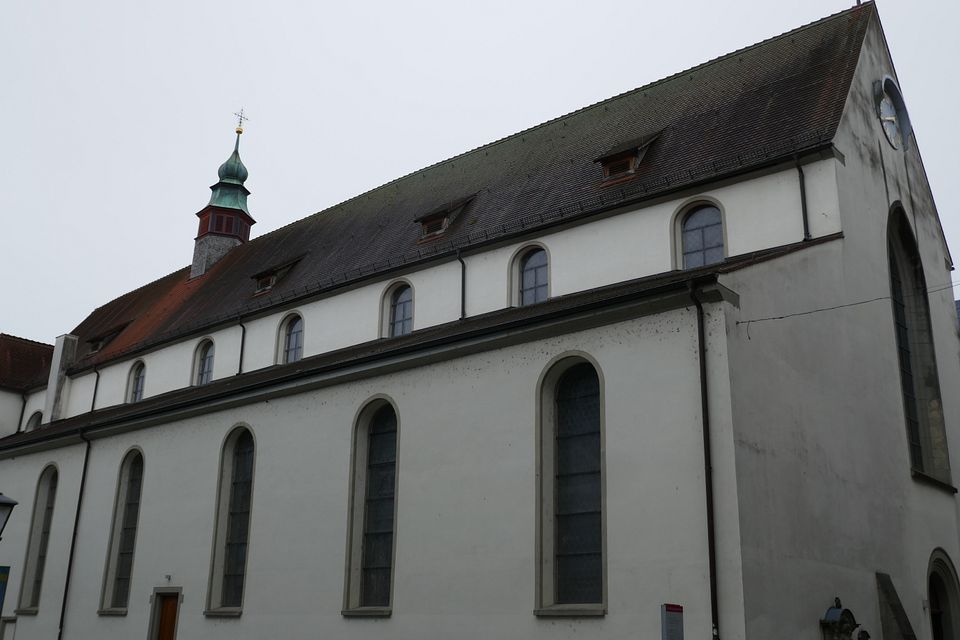
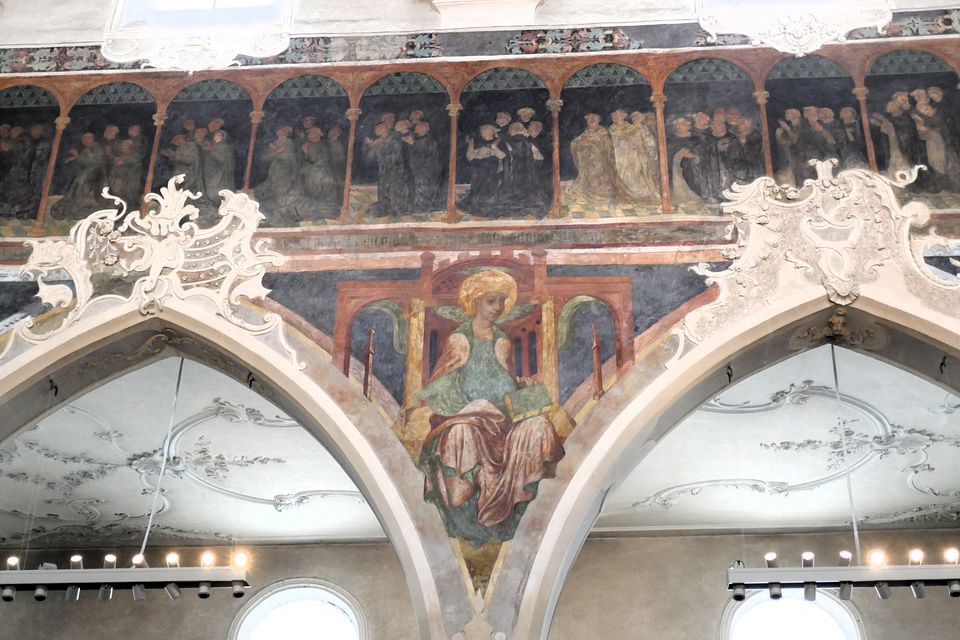
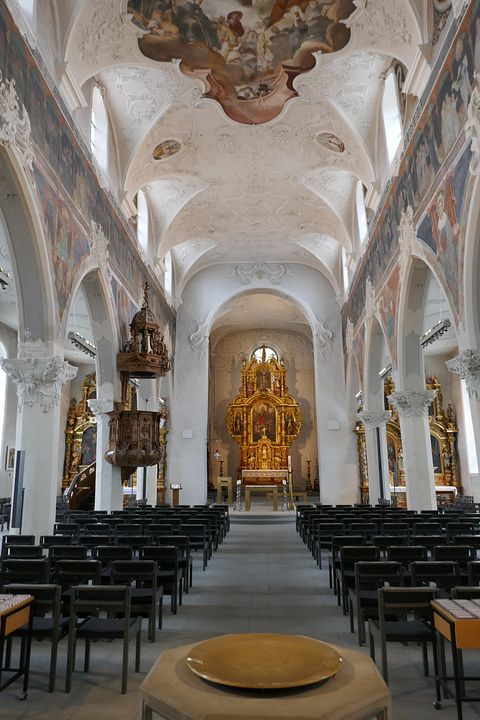
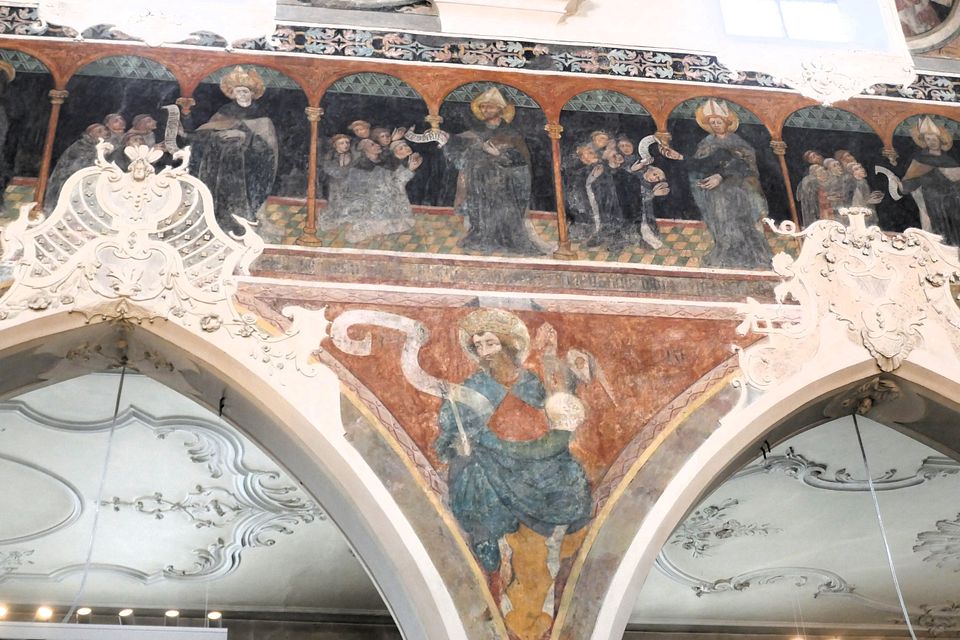
The Jan Hus Museum, usiing the building where the Czech Reformator was staying before being arrested, tried and burned:
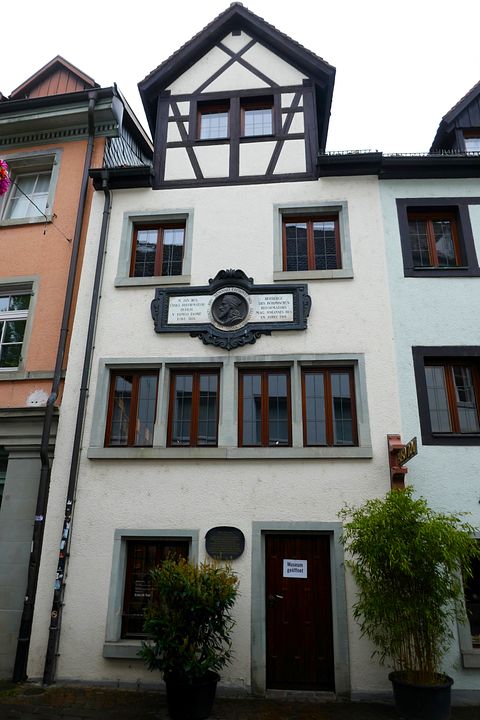

Trinity Church:

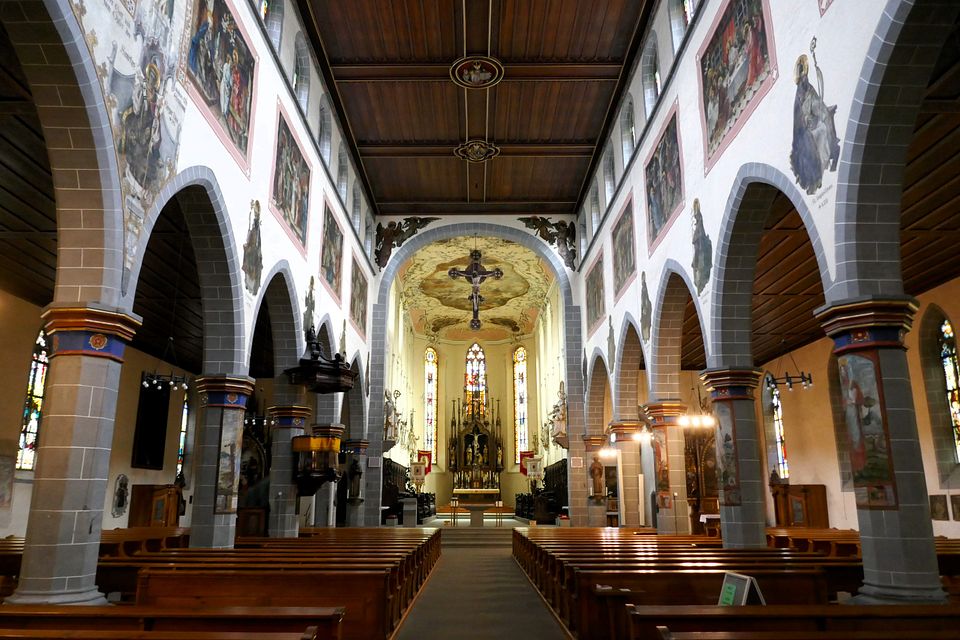
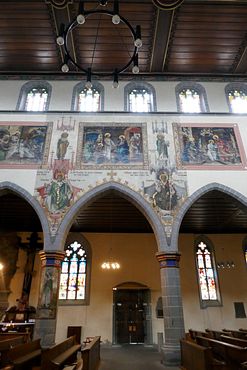
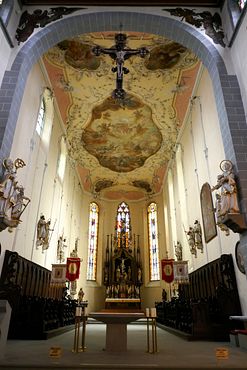
Back to the opposite site of the church. One laketown that's frequented by people wanting to lose some weight is Überlingen. It has, however, also other attractions. Including another scandalous Statue by Peter Lenk.
Überlingen
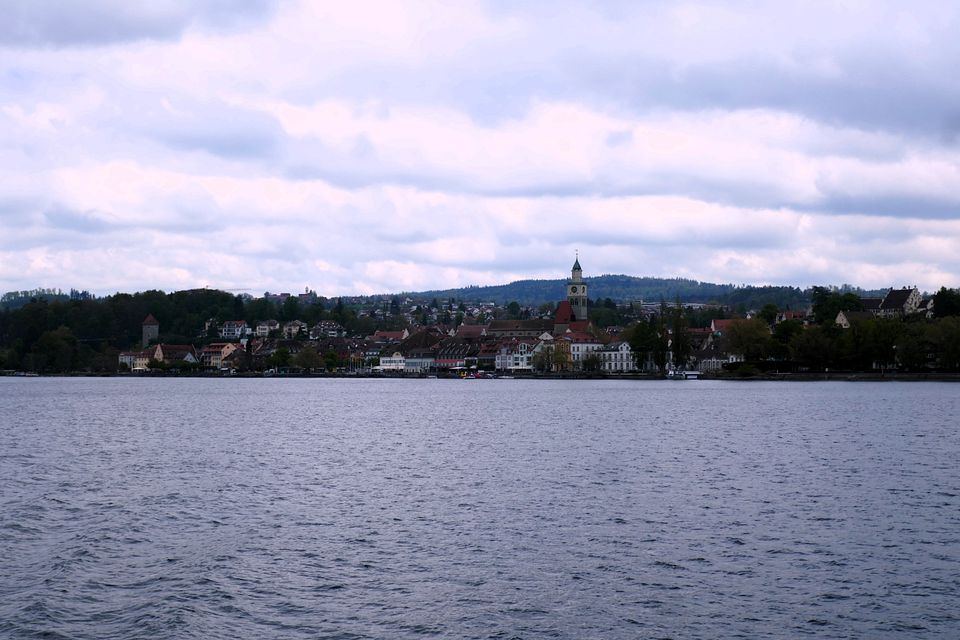
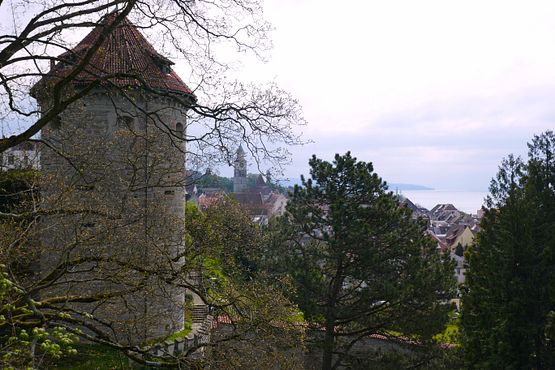
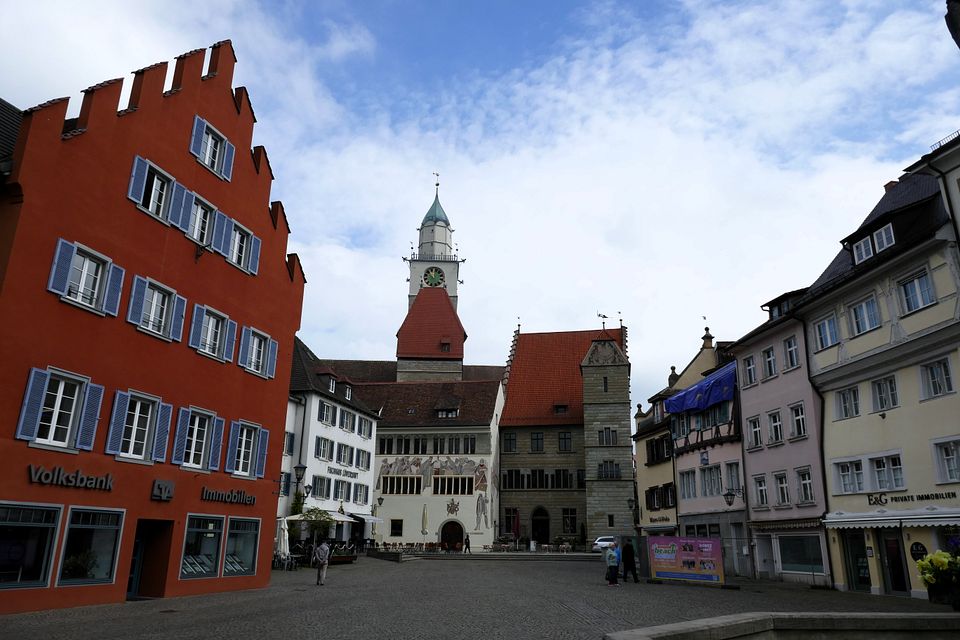
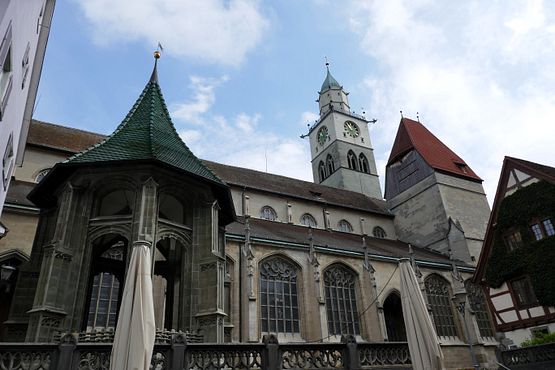
Überlingen is best seen from the city museum which is located in the upper part of the town and offers a neat panoramic view from its garden:

The museum itself:
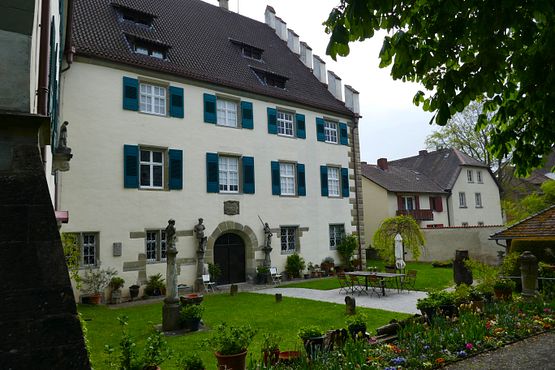
Said museum also has some rooms inside from old farmer houses to show how they looked like:

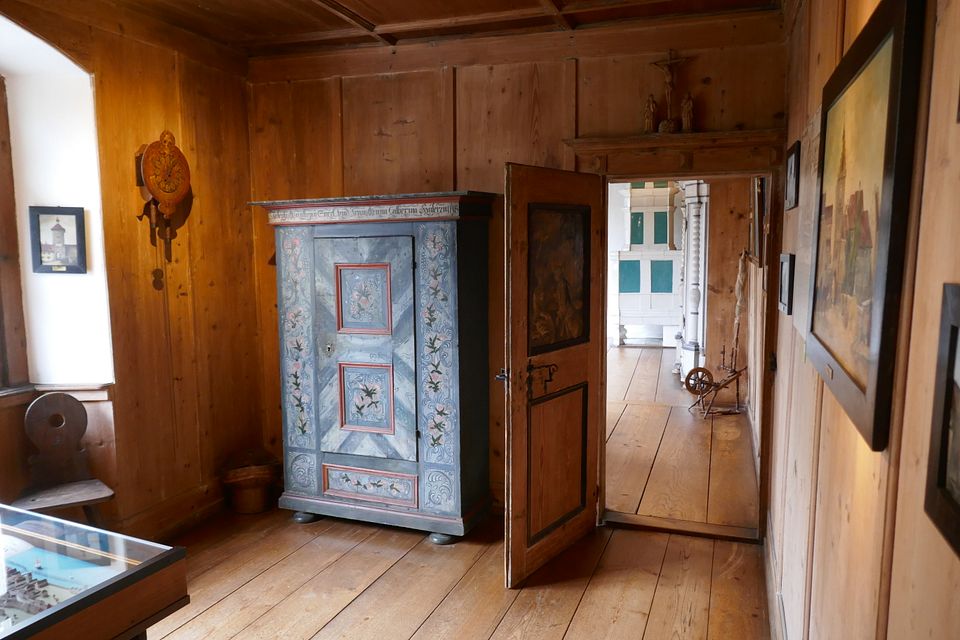

Parts of the Überlingen city wall are still intact:
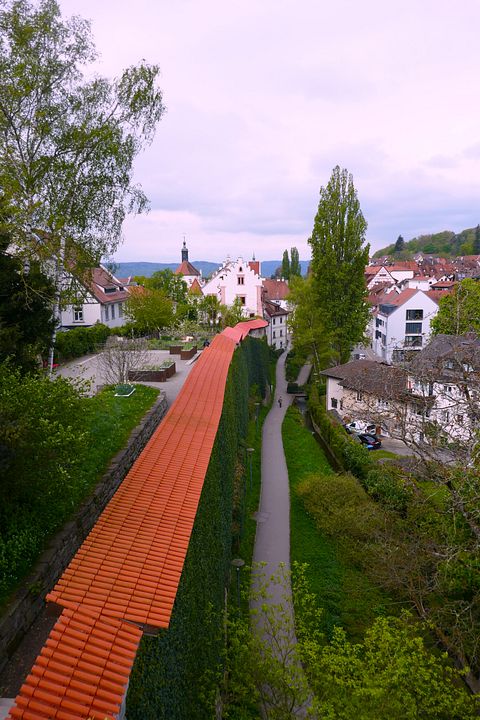
And then there's sculptor Peter Lenk striking again, this time with a statue called "Der Bodenseereiter", "The Rider of Lake Constance", with the rider in question looking suspiciously like writer Martin Walser (living nearby). Walser wasn't thrilled. Not being a fan of his (he's the smug egomaniac type), I can't say I mind.

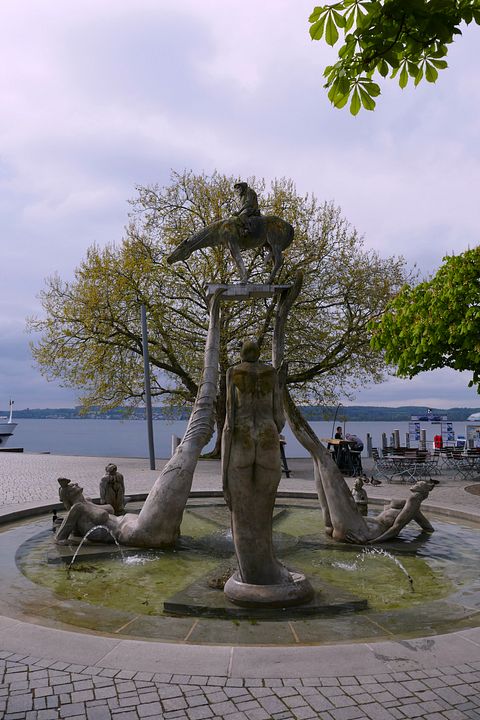

On my day of departure, I finally lucked out with the weather and the sun was with me once more as I visited the one tiny Bavarian part of Lake Constance, to wit, Lindau. Most famous for its gorgeous harbour.
Lindau
We'll see more of the harbour later, but have an overview to begin with.

Now, most of the German part of Lake Constance is located in the Federal German state of Baden-Württemberg. But Lindau is located in the Federal State of Bavaria. And no, you're not allowed to forget it. Anyway, let's start with the very oldest church, St. Peter, which is one of the oldest on the lake, full stop. The big attraction, though, is that a 1967 restoration discovered there was an entire cycle of Renaissance paintings by Holbein the Elder under some later veneer and liberated it:
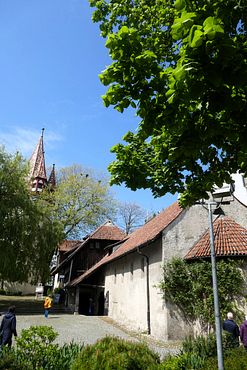

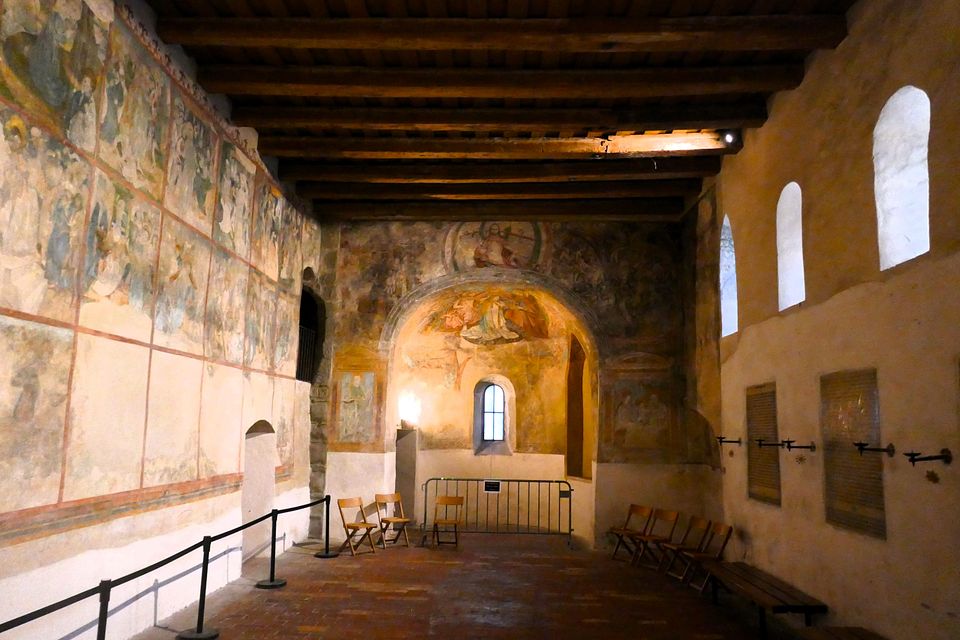

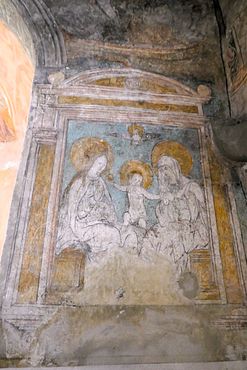
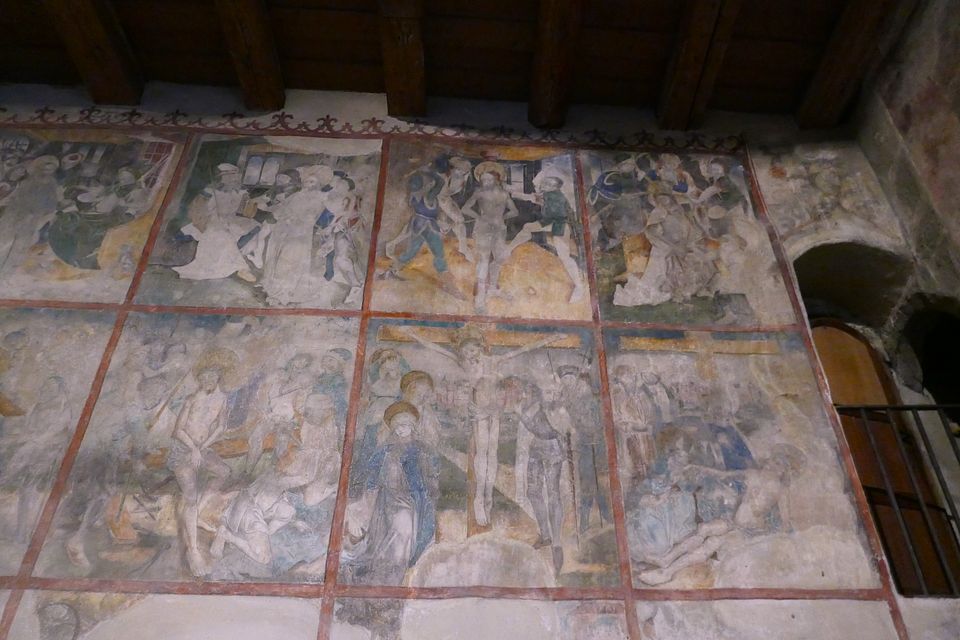
Lindau as an Old and a New City Hall. (The New one is the red one.)
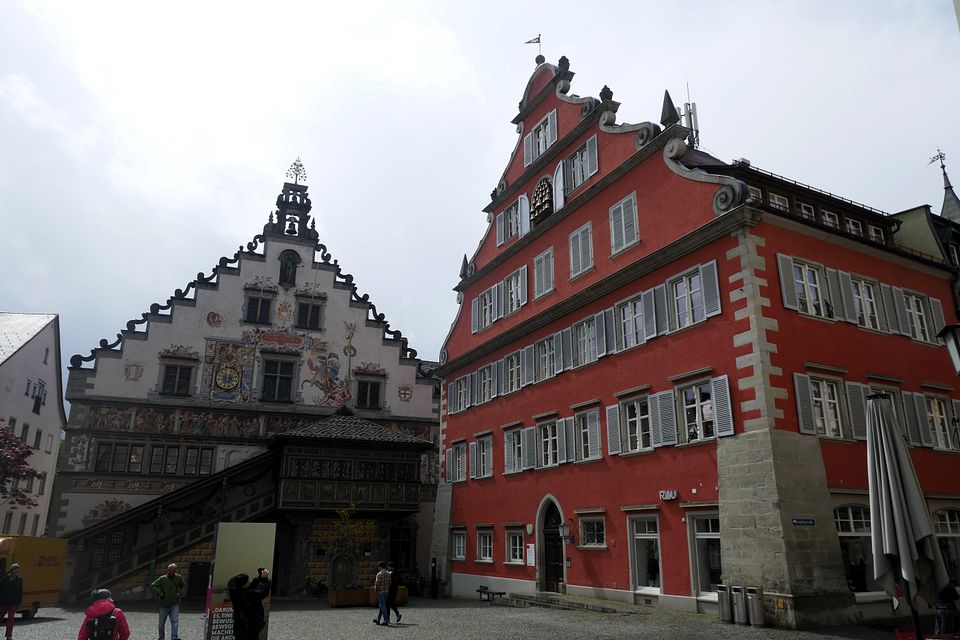

The Old City Hall:

Its paintings feature Philip the Fair, aka the skeevy son of Maximilian I. who married Juana the daughter of Ferdinand of Aragon and Isabella of Castile. It was lust at first sight (they literally ordered a priest to immediately marry them so they could have sex right away when they met instead of waiting for the proper arranged ceremony), and a long term tragedy for poor Juana "the Mad" (or was she). It was also the marriage that produced Charles V. and got Spain for the Habsburgs. The Philip and Juana meeting as imagined here:
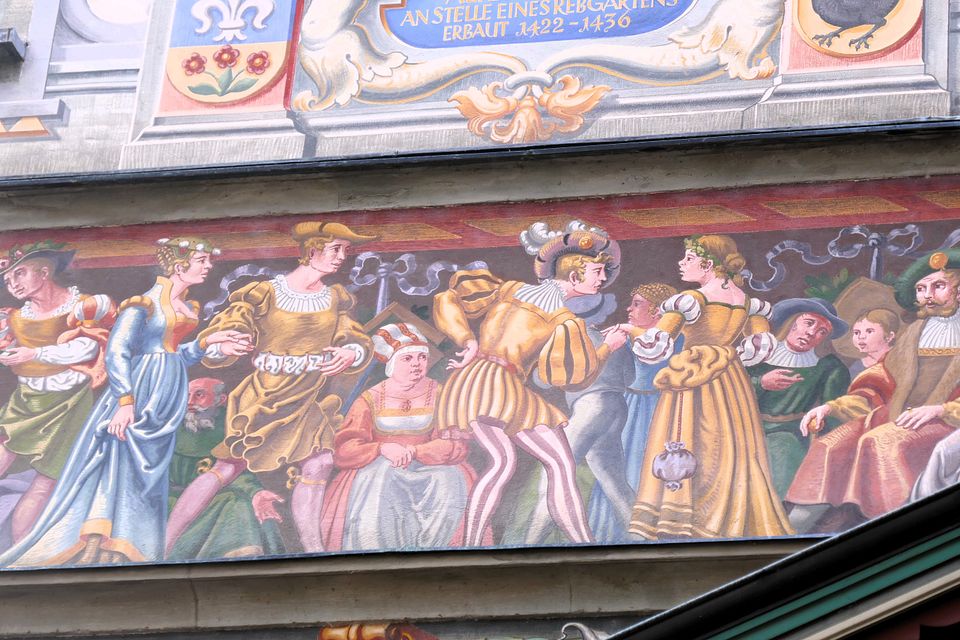
The other side of the Old City Hall:

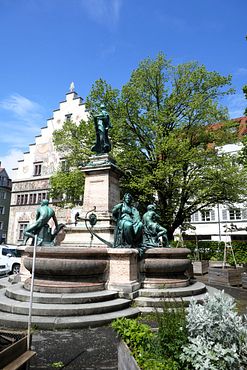
The Pedestrian zone:
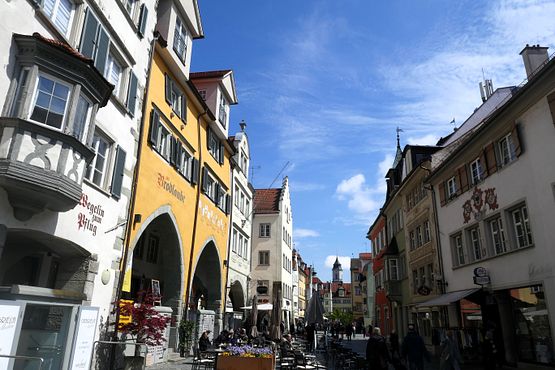
But really, the main reason why people come here is for the harbour. Featuring Bavaria's one and only lighthouse and a proud Bavarian lion:
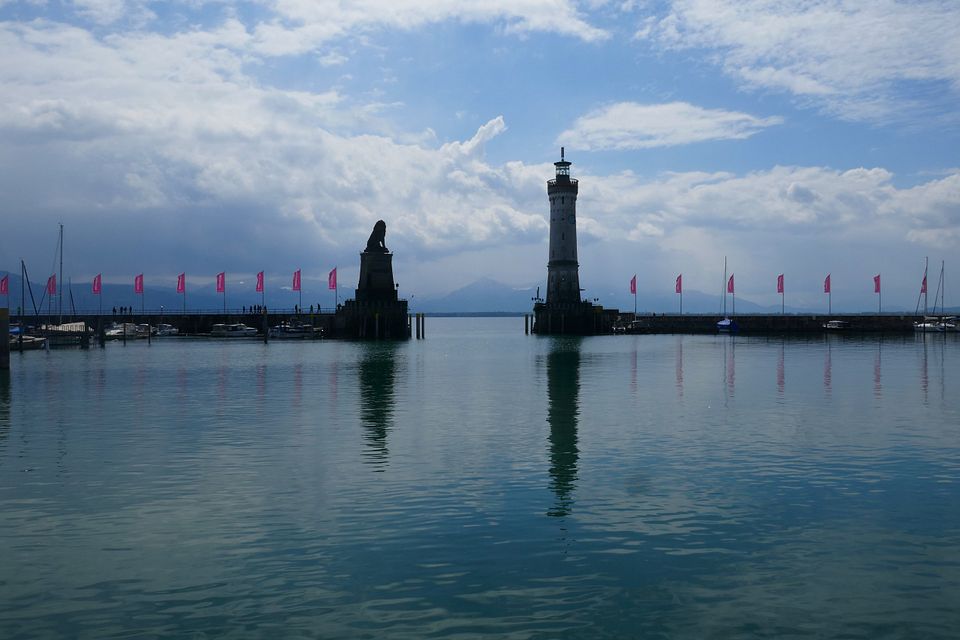

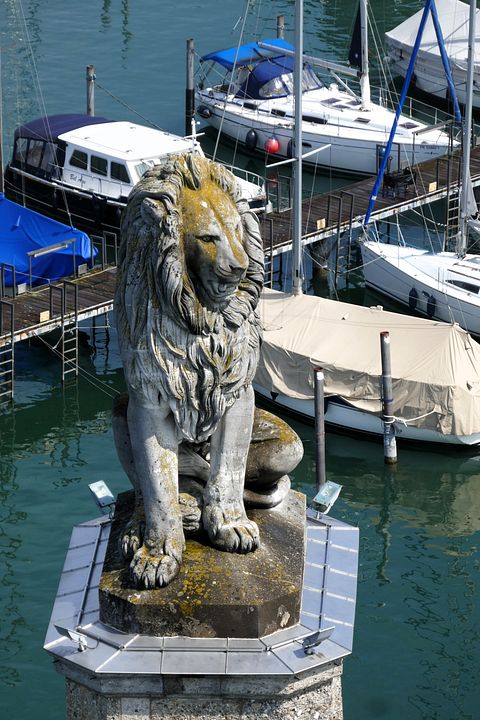
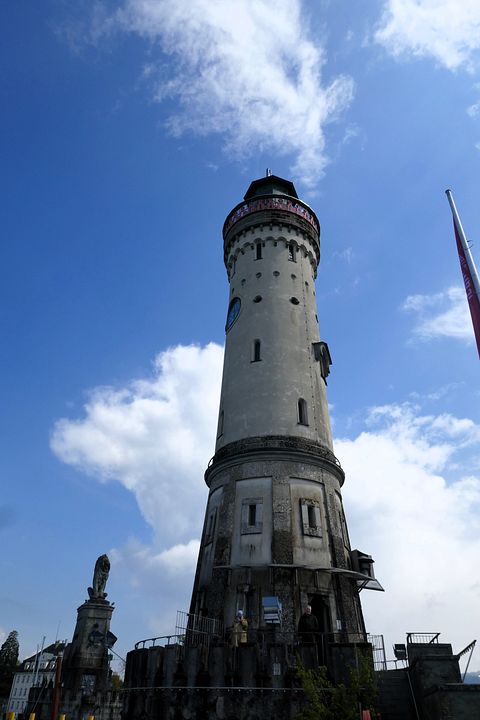
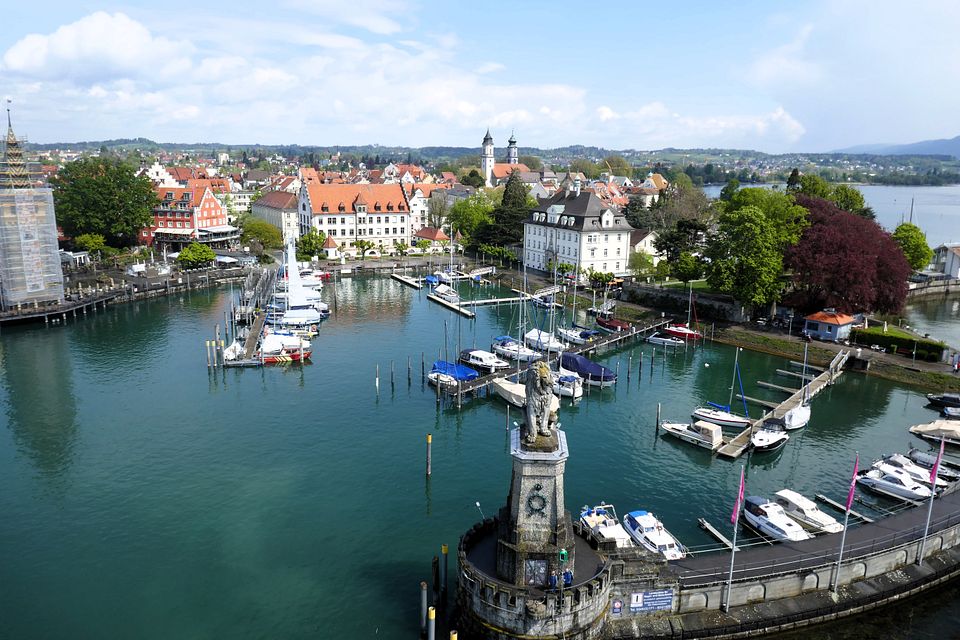

And thus I took my leave of Lake Constance:
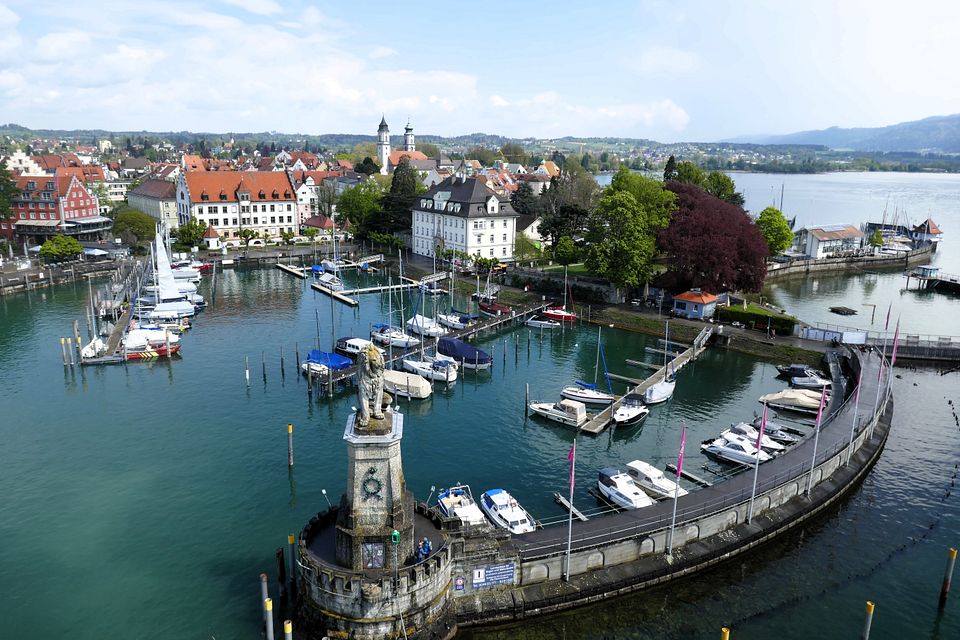

First, I made a brief stop in Bregenz, Austria. Featuring the famous built-into-the-lake opera stage featured in a James Bond movie, so international viewers might dimly recall it.
Bregenz
Unfortunately, Bregenz was where it was coldest. Seriiously, that's where the snow came in. This is the "Oberstadt", the upper city of Bregenz:


The famous stage, currently in the process of being rebuilt from a production of Weber's Freischütz:


Where the very rich drink champagne in between opera visits:

But my main imipression is from when I took the lift to the top of the overviewing mountain, the Pfändler, and was rewarded with this sight:

Next, I crossed the border to Switzerland and visited St. Gallen, home to one of the most beautiful preserved libraries of the world:
St. Gallen

Now, while being an early medieval monastery, St. Gallen went through the more common than not fate of extensive makeovers, partly due to renovations, or burnings, or showing off against the competition. The current aesthetics are therefore not medieval but baroque. And how. This is the inside of the main church.


But like I said, the star attraction is the library. The last time I was there, over a decade and more ago, one wasn't allowed to take photos, and my AP took one illegaly. These days, in the age of the cell phone, it's permitted, but only without flashs, and also there are so many people there at any given day you can't get the library on its own. It's still awesome to behold:





The globes there:


And a mummy! (25th dynasty, so relatively late into Egyptian history, but still incredibly ancient for the monks and us.)

The big monastery rival of St. Gallen in the early middle ages was the monastery on the island Reichenau, which is where I went next. (Crossing borders agian to the German part of the lake.) This island is celebrating its 1300th birthday this year, but it's worth visiting at any time, although, unlike St. Gallen, the Reichenau monastery had bad luck from the late middle ages onwards, and so its library disappeared and now the books reside elsewhere, having returned for the first time in centuries fo rthe big anniversary exhibition.
Reichenau
Reichenau today is often called "the vegetable island" , partly to differentiate it from the "flower island", Mainau, and partly because from time immemorial onwards, it had extremely fertile land that was used for vegetable, fruit and vineyards. Here's a panoramic few from the highest point of the island (not very high, mind you, barely a hill):

This is the side where the river Rhine enters the lake.

The other side:


There are three small towns/villages on the island, Oberzell, Mittelzell and Niederzell. Of the ca. 20 churches that used to be there, three main ones are preserved in each community. Oberzell has St. George, which was founded in the late ninth, early tenth century by one of the island's most powerful abbots, who rose all the way to the top of the East Francian Empire, becoming the Regent for the last Carolingian ruler, Ludwig the Child. His name is Hatto, and Hatto didn't dedicate this church to St. George by accident; he'd been given the Saint's skull by Pope Formosus. Aside from said relic, St. George's standout attraction are the wonderful Ottonian era frescoes on the walls. Check out the church:






Now, during my time at Lake Constance, St. George's Day was celebrated. In case anyone was wondering what the dragon slayer saint from Cappadocia who for some mysterious reason became adpted by the Brits as their patron looks like these days, wonder no more!




In addition to a beautiful local choir, there was also the citizen's orchestra, which was supposed to play outside, but courtesy of the rain couldn't:

What remains of the main monastery is in Mittelzell:


The minster there is dedicated to Mary and St. Mark the Apostle. The later because this happened: first the Reichenau monks got the relics of minor saint from late antiquity, St. Valens. Then, two hundred years later, they felt the need for someone more famous, even more famous than St. George, and lo and behold, via dreams it was revealed that Ratolf, the abbot who got the St. Valens relics, really had been given the bones of St. Mark by a Venetian chum, barely a year after the Venetians themselves had kidnapped them from Alexandria. What's that you say about St. Mark in Venice? Clearly, they don't have the real deal. And so the Reichenau citiizens insist to this day.

The last surviving church is in Niederzell and called St. Peter and Paul. It got the firmest baroque overhaul but also has some medieval paintings inside:



One moree island overview:

One great help for Lake Constance visitors is that there's a ferry for cars to use between Constance itself and Meersburg on the other side of the lake. Take it, and spare yourself 70 kilometres country road around the lake. Which is what I did when visiting Meersburg, that medieval delight with Germany's most famous female poet's final resting place.
Meersburg
The city of Meersburg, called after the castle presiding over it. Come the Reformation, the Bishop of Constance eventually decided to move residences from Constance to Meersburg, to said castle; living in a medieval castle provded too uncomfortable, and thus was the New Palace built (the pink building), which became the Bishop's residence for the next centuries.


The New Palace was later used as a hospital for some years, which is why the interior didn't survive and had to restored (partly), but it's still delightful to watch. BTW, reading about its prince bishops is a strange deja vue if you're from Bamberg like me, because there are Stauffenbergs and Schönborns all over the place, just like in my hometown, itself also the seat of Prince Bishops.


The castle, the literal Meersburg:



In front of the main entrance is the bust of a lady you'll see more of, 19th century poet Annette von Droste-Hülshoff. It's always hard to judge such things, but her claim of being Germany's most famous female poet is better than most. She's not a local girl, but from near Münster in Westphalia where she spent most of her life. However, her sister Jenny married one noble obsessed with the middle ages, Joseph von Lassberg. At this point, the castle had been unwanted expensive goods ever since the bishops had ditched it in favour of the New Palace, and thus Laßberg could aquire it, he and Jenny moved in, and that in turn meant Annette visited Jenny during her last decade of life repeatedly, writing some key poems of German literature there and eventually deciding to take up residence at Lake Constance for good. She bought another bit of real estate the Church was trying to get rid off to live in near the castle, the "Fürstenhäusle" , which you'll see later from the first money she earned when her poetry finally started to sell and succeed, started to furnish it, and then tragically died of chronic ill health before she was able to move in permanently at little more than 50 years of age.

Because of the Annette factor, the castle's rooms today are divided between medieval-themed rooms and 19th century Annette themed rooms. On Saturdays, which is when I was there, citizens of today's Meersburg show up in medieval gear doing some neat cosplay for the tourists.







The 19th century furbished rooms where Annette used to live when staying with sister Jenny illustrate why the mid 19th century wasn't an aesthetic highlight of German interior design, but they are touching to visit nonetheless. The bedroom where she died:

Her writing room with some manuscripts:


As mentioned, Annette - who had always lived first with her family, then after her father's death with her mother and sister at her mother's widow estate, and then with Jenny and her husband - had bought herself her first "single" residence which is located not far away from the castle but still located somewhat higher in the vineyards, and is nicknamed "little princely house". Little being the operative word. But it looks adorable and she was really happy about getting it:

It has an spectacular view over Meersburg and the lake:

Here's the interior, which has been reconstructed, because after Annette's death and then Jenny's, Jenny's daughter's inherited the house and actually lived there, and thus it was passed on through Jenny's descendants who lived there right until the 1960s. Only then was it repurposed as an Annette museum, and because Annette had described how she'd furnished it in the intention of moving in, refurnished to look like what she wanted:



Annette - along with various family members via Jenny and a friend - is buried at the local cemetary:

The small town of Meersburg itself is delightful to walk through, looking thusly:

Have two more panoramic views, one from the Fürstenhäusle and one from the New Palace:


Next, I visited Salem. No, not the one with the witches. Or the vampires. The other one. Behold:
Salem
Salem was another of those early medieval wealthy monasteries. In this case, the medieval buildings burned down in spectacular fashion, and then the whole estate, monastery and church, was rebuild by one Abbot, Anselm by first name, who squared off against the Bishop of Constance (by then a close neightbour because of the removal to Meersburg factor) in opulence, with the result that today's Salem, architecture and interior wise, is an example of southern Rokoko at its finest. Then, Napoleon and the secularization happened, and Napoleon handed over Salem to his new in laws the Margraves of Baden (in laws via the Stephanie de Beauharnais/Karl von Baden marriage), who took the place as their main residence. They still partly live there, but more importantly for German cultural history, Max von Baden, last Chancellor of the short lived German Empire, gave it to his faithful secretary, right hand man and founder of Reformpädagogik, Kurt Hahn, to found a school in, which Hahn did. When the Nazis took over, Hahn fled to Scotland and took the school idea waith him, founding Gordonstoun, aka the school Prince Phililp loved and Prince Charles hated. (The reason why Philip was there to begin with was the Baden connection, since the sister he was living with as a child had married into the Baden family.) Now, check out Salem, the main buildings:

Main building:

Seat of the administration today:


Formerly the buildings used for agrarian purposes in the monastery days:

As mentioned, the original buildings burned down in 1697 and was then rebuild in full late Baroque, early Rokoko splendour. Some bits and pieces of the original medieval building still exists, like these:

That's the medieval artisan immortalizing himself:

And because of the devastating fire, from this point onwards there were always fire extinguishers a plenty there. These are Rokoko fire extinguishers:

The door to the library was built like that of a modern bank:

The library - which as opposed to the St. Gallen one is still in use, as part of the school, I'll have you know:




These are the residence rooms of Abbot Anselm the Rokoko guy who frequently clashed with the Bishops of Constance. (One reason why he never was ousted despite some efforts was that he was tight with Empress Maria Theresia.)




When the monks left and Salem was handed over to the Baden Margraves, they took the clocks themselves but left the extensive artful houses of the clocks, like this one:


The most opulent room - for princely receptions and the like - is inevitably called the Kaisersaal, the Imperial Room, and given this is a South German institution, most of the Emperors depicted are Habsburgs, with two Luxemburgers and a Wittelsbach thrown in. (No Hohenzollern need apply.)


There are some nifty details. Like this remarkable statement, which means "There is no holy war". In a room which was built after the last major Austria versus the Ottoman Empire war, no less:

Also these:


Then there is the room which used to be the dining room for the monks, and then was repurposed by the Margraves of Baden to serve as their Chapel. Why? Because by the time they acquired Salem from Napoleon, the Margraves of Baden were firm Protestants, and the main church of Salem was still a Catholic one. It is still used by today's Baden family as their church:


My favourite part is of course the spectacular oven which hails from the Rokoko monastery era:





On to the church:


Now, by the time the church's interior was due, Abbot Anselm had heard news about France switching to a new more "classical" style. He wanted a new church, too! This is how Anselm, Rokoko guy who he was, imagined "classical" style:


Anselm also was responsible of rebuilding another burned down bit of old medieval real estate nearby, the Church St. Birnau:



Which is entirely baroque in its interior, but you're not allowed to take photos, so I didn't, she said virtuously, having been observed all the time.
Before returning to the other side of the lake again via ferry, I paid a visit to Unteruhldingen, where a century ago, Bronze age settlements were found and reconstructed:
Unteruhldingen





But what about Konstanz itself, you ask? The city that gave its name to the English version of the lake? (It's "Bodensee" in German.) The city that saw a Church synod, the depostion of not one, not two but three Popes at the same time, and the burning of Jan Hus?
Konstanz
There's a novella by French writer Balsac featuring the Courtesan Imperia who during the Council of Constance had Emperors and Popes as her lovers in said book. Controversial sculptor Peter Lenk used this story to craft the statue which today is the signature piece of the harbour:



Speaking of the Harbour: let's start an overview of Konstanz, as seen from the highest church tower:



That would be the tower of the Minster of Our Lady. This one:



Compared with other churches, the main interior of the Minster is just okay:


But it has some truly remarkable smaller crypts and chapels underneath. Like this one, featuring plates from the early middle ages:




Or the Rotunda of St. Maurice.



Or the chapel of St. Sylvester:


I had terrible weather when being in Konstanz, except for a few moments. This is the old city hall:

The main pedestrian zone with the Imperial Fountain (Kaiserbrunnen):



There are four Emperors rememnbered in that fountain - Friedrich I. "Barbarossa", Otto I "The Great", Maximilian I. ("the last Knight") and his second wife, and Friedrich II (Stupor Mundi, not Frederick the Great). The later doesn't show up in person, but the the horse having eight hooves is supposed to allude to the fast and secret trip of teenage Friedrich from Sicily through Italy and over the Alps, arriving in Konstanz literally just two hours before his rival for the throne, Otto IV, would have, and sitting down to eat Otto's prepared dinner. That's why said horse also has a "Augustale", a Roman style coin Friedrich II later had issued:



More Konstanz buildings:

St. Stephen:




The Jan Hus Museum, usiing the building where the Czech Reformator was staying before being arrested, tried and burned:


Trinity Church:




Back to the opposite site of the church. One laketown that's frequented by people wanting to lose some weight is Überlingen. It has, however, also other attractions. Including another scandalous Statue by Peter Lenk.
Überlingen




Überlingen is best seen from the city museum which is located in the upper part of the town and offers a neat panoramic view from its garden:

The museum itself:

Said museum also has some rooms inside from old farmer houses to show how they looked like:



Parts of the Überlingen city wall are still intact:

And then there's sculptor Peter Lenk striking again, this time with a statue called "Der Bodenseereiter", "The Rider of Lake Constance", with the rider in question looking suspiciously like writer Martin Walser (living nearby). Walser wasn't thrilled. Not being a fan of his (he's the smug egomaniac type), I can't say I mind.



On my day of departure, I finally lucked out with the weather and the sun was with me once more as I visited the one tiny Bavarian part of Lake Constance, to wit, Lindau. Most famous for its gorgeous harbour.
Lindau
We'll see more of the harbour later, but have an overview to begin with.

Now, most of the German part of Lake Constance is located in the Federal German state of Baden-Württemberg. But Lindau is located in the Federal State of Bavaria. And no, you're not allowed to forget it. Anyway, let's start with the very oldest church, St. Peter, which is one of the oldest on the lake, full stop. The big attraction, though, is that a 1967 restoration discovered there was an entire cycle of Renaissance paintings by Holbein the Elder under some later veneer and liberated it:






Lindau as an Old and a New City Hall. (The New one is the red one.)


The Old City Hall:

Its paintings feature Philip the Fair, aka the skeevy son of Maximilian I. who married Juana the daughter of Ferdinand of Aragon and Isabella of Castile. It was lust at first sight (they literally ordered a priest to immediately marry them so they could have sex right away when they met instead of waiting for the proper arranged ceremony), and a long term tragedy for poor Juana "the Mad" (or was she). It was also the marriage that produced Charles V. and got Spain for the Habsburgs. The Philip and Juana meeting as imagined here:

The other side of the Old City Hall:


The Pedestrian zone:

But really, the main reason why people come here is for the harbour. Featuring Bavaria's one and only lighthouse and a proud Bavarian lion:






And thus I took my leave of Lake Constance:

